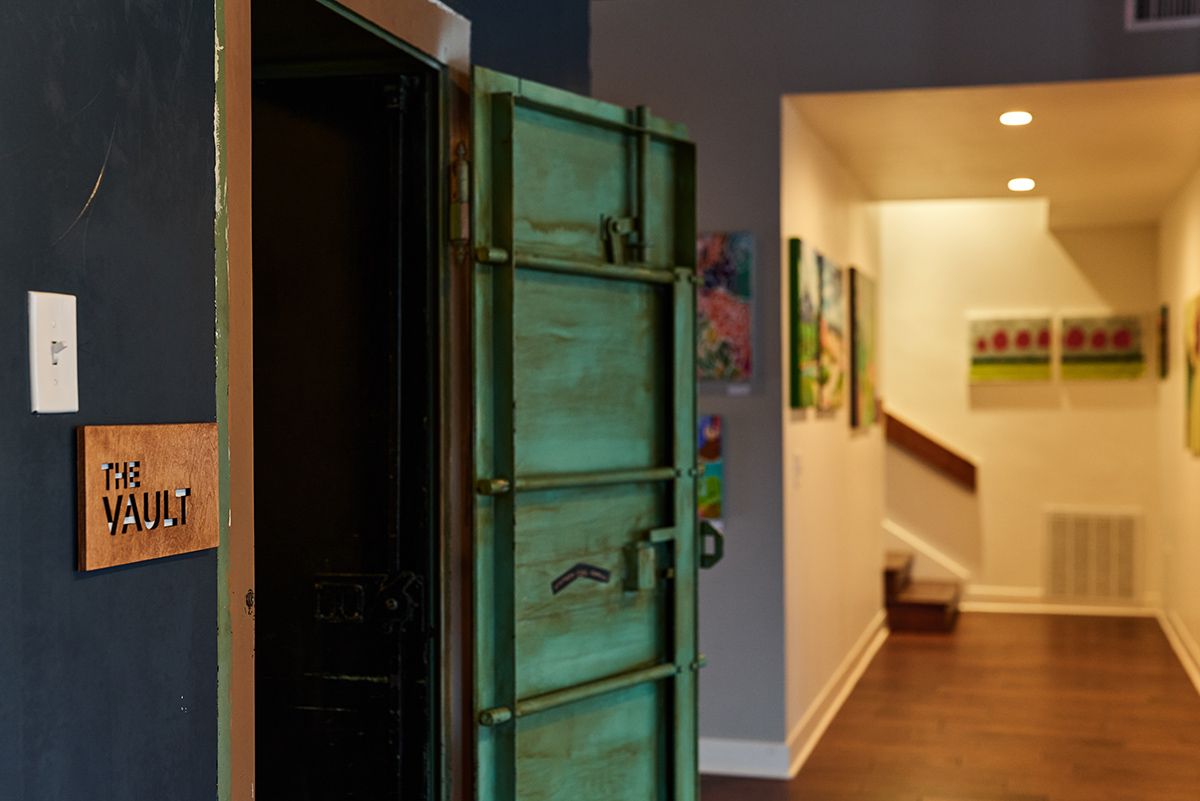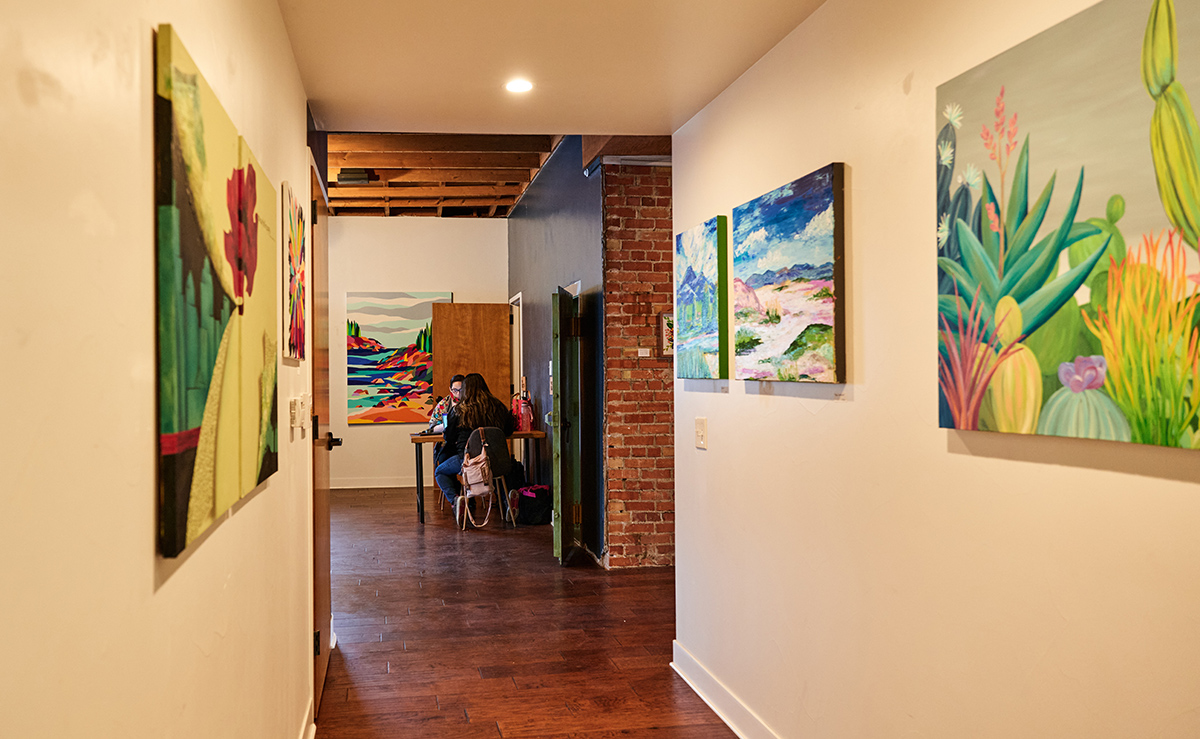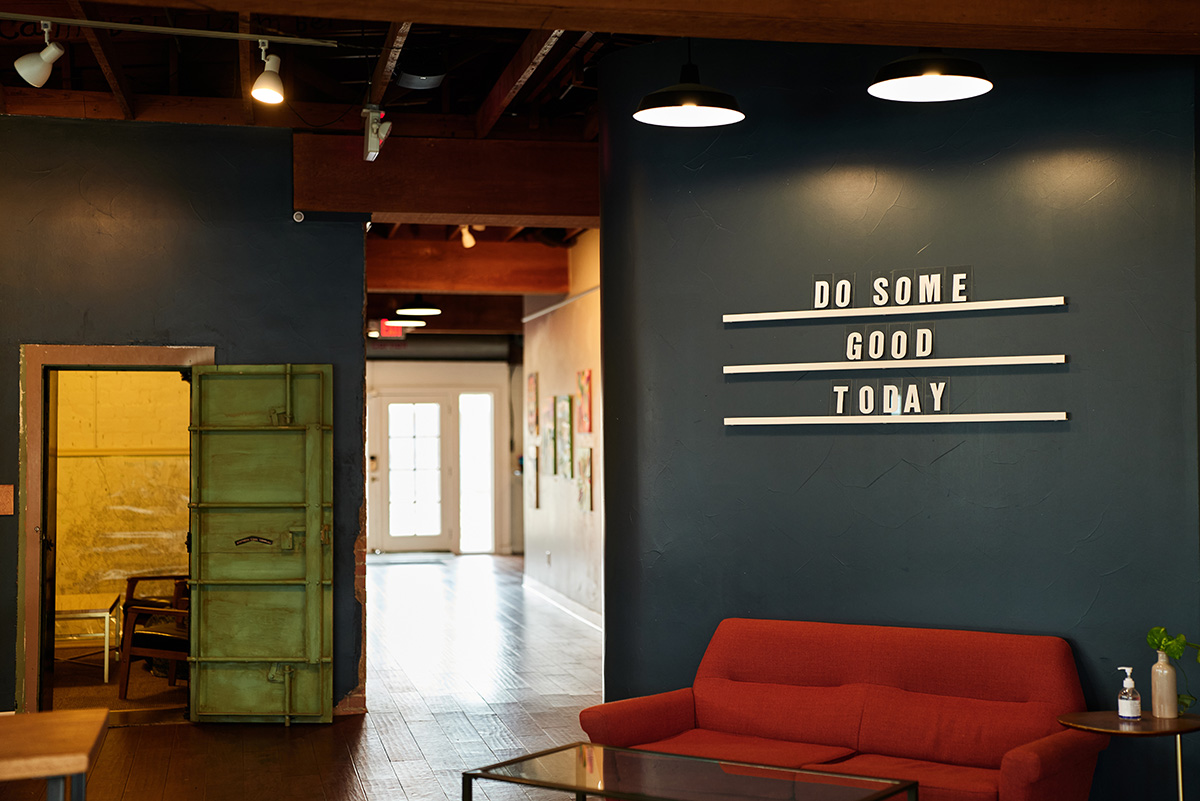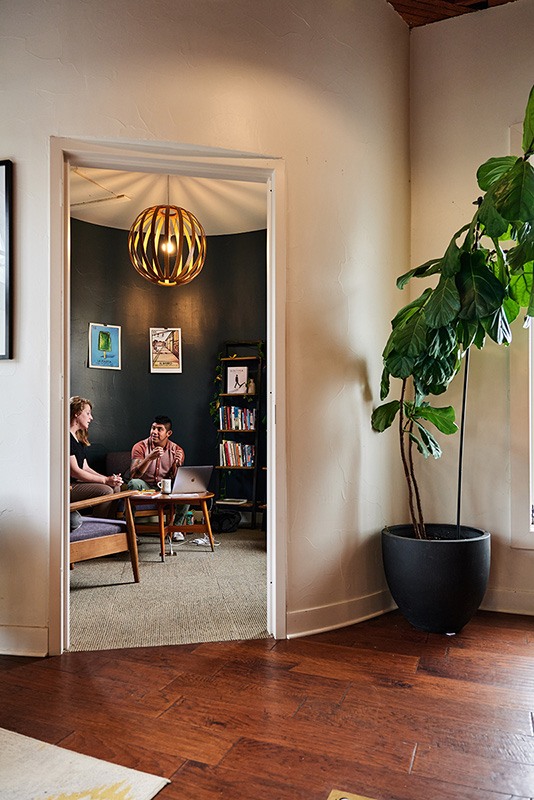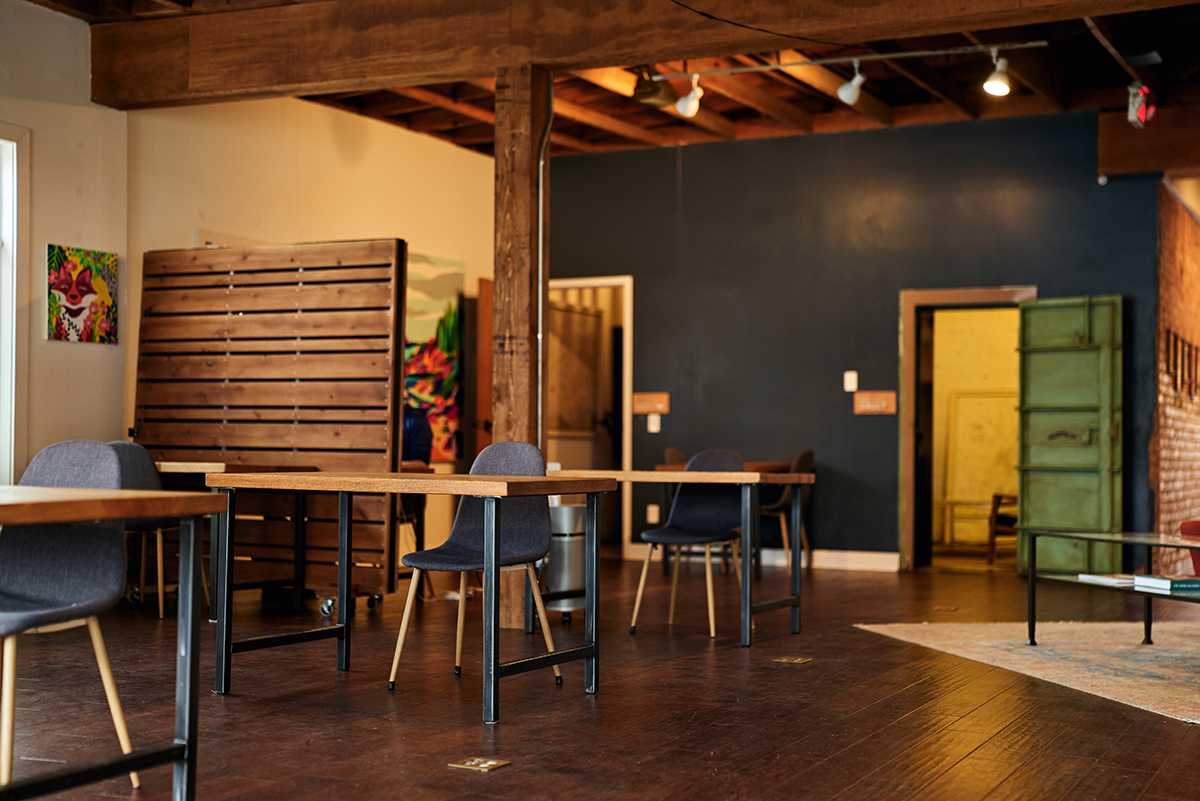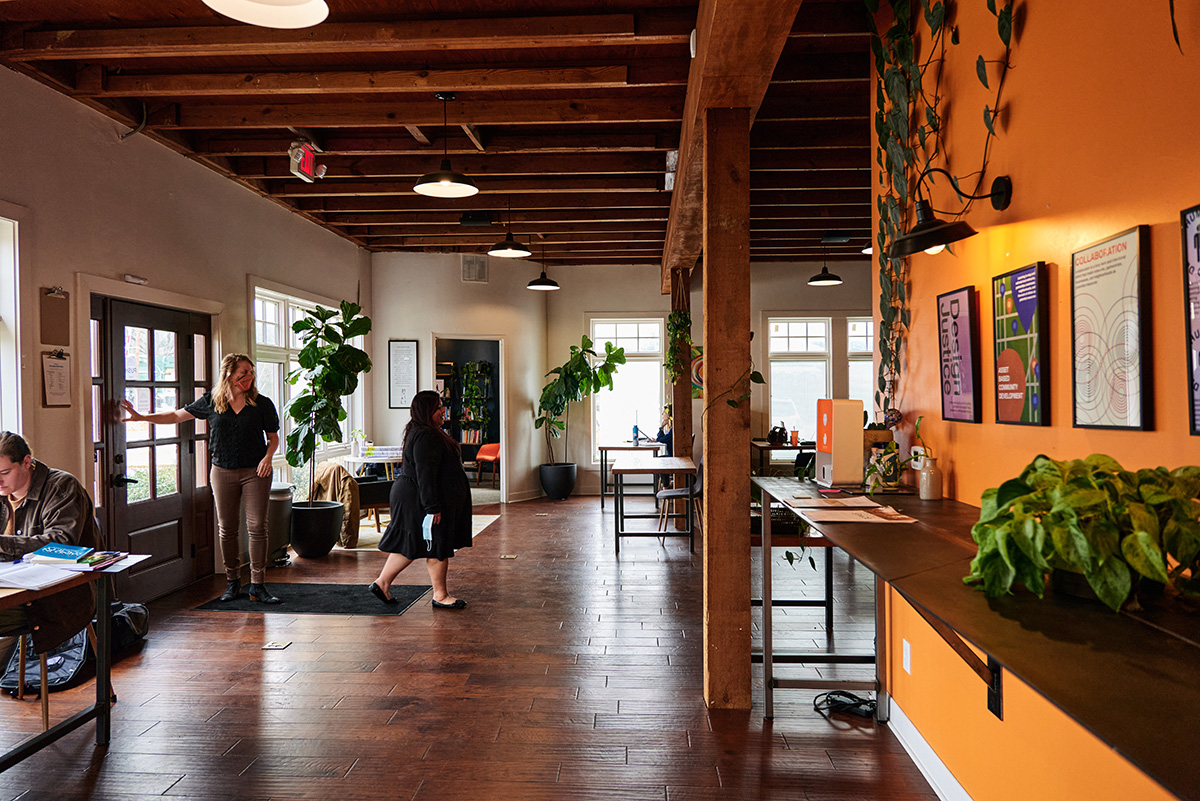Recent research released by Barna Group reveals a demographic trend that may not bode well for the stability of congregations. As a significant percentage of pastors near retirement, the pipeline of younger successors appears insufficient to take over their leadership responsibilities.
According to the 2022 Barna Resilient Pastor research, one-quarter of pastors said they hoped to retire within the next seven years.
In addition, the age of pastors in America has been trending upward for decades. According to the 2020 Faith Communities Today (FACT) study, the average age of religious leaders has increased from 50 in 2000 to 57 in 2020. A 2017 Barna study found that the median age of a Protestant pastor was 54 at that time — up from 44 in 1992.
“As a generation of clergy ages and prepares to step down, it is not clear that churches are prepared for the transition,” Barna reported. “If this trend goes unaddressed, the Church in the U.S. will face a real succession crisis.”
According to Ashley Ekmay, a lead researcher for Barna, one of the most significant questions arising from the study is whether pastors are exhibiting to younger people that entering the ministry is worth it. “The data seems to indicate that the answer to that question is no,” she said.
Much of that sentiment can be attributed to the fact that a rising number of pastors are considering quitting themselves — and not just to retire. “As of March 2022, 42% of pastors said that they had considered quitting full-time ministry in the last year,” Ekmay said. “That is a very jarring thing to state.”
Numerous factors seem to be contributing to pastors’ current state of mind about leaving the ministry, Ekmay said.
“There’s this collective ache among pastors,” she said. “When we asked them about burnout and whether they were considering quitting in 2022, they pointed to numerous things that were making them feel that way. Divisions in the church were a huge factor, especially from increasing polarization in America coming off George Floyd’s death, masking during COVID and Trump’s presidency.
“The pastors felt like they had to take a side, but no matter what side they picked, they were on the wrong side,” Ekmay said.
When addressing succession planning for the church, Barna found that 38% of 584 pastors surveyed personally made it a top priority to equip, nurture and identify leaders to take over their role upon retirement. However, nearly an equal number of pastors — 40% — indicated they had “thought about the need but have too many other ministry concerns.”
Whether or not they had invested in succession planning, a significant number of pastors responding to the Barna study said they anticipated difficulties in finding younger successors. As of 2022, only 16% of Protestant senior pastors were 40 or younger.
According to the survey, which was conducted in September 2022, 75% of pastors said they “strongly” or “somewhat” agreed with the statement “It is becoming harder to find mature young Christians who want to become pastors.” Nearly 35% of the respondents strongly agreed with that statement — up from 24% in 2015. More than 70% of the pastors also said they strongly or somewhat agreed with the statement “I am concerned about the quality of future Christian leaders.”
More recent pastor interviews related to Barna’s research series seem to indicate that the succession challenge may not be going away anytime soon. An additional factor seems to be emerging, suggested by the early findings of the 2023 study, which is scheduled to be released in spring 2024, Ekmay said.
“We’ve noticed that there seems to be a contagion effect,” Ekmay said. “When we asked, ‘Do you know anyone else who has quit the ministry?’ we found that those who knew someone who had left were giving more thought to leaving themselves.”
My daughters were in early elementary school 15 years ago, when the mass shooting at Virginia Tech took place 70 miles down the road from our home. I was midway through reading “Bridge to Terabithia” to a class of second graders when this then-unusual form of violence ripped through their young imaginations.
The school’s guidance counselor and I used Katherine Paterson’s novel about a child dealing with tragedy to help the students — several of whom knew some of the Tech victims personally. We talked about their experiences of grief, loss and fear in the aftermath of that tragedy.
The unusual has now become commonplace: mass violence leaves young and old alike grieving almost weekly in our nation. But it is young people — those now in their 20s and those coming along behind them — whose coming-of-age is marked by the commonplace reality of mass violence.
It’s important to find civic and political cures for these forms of violence and to provide for the emergency mental health needs of young adults today. But I wonder: Could we also look upstream, to prevent problems and maintain the mental health of our young before crises hit?
This first generation to come of age in the spiritual-but-not-religious era is not without spiritual practices; the internet supplies plenty. But young people are often without communities of support, companions on the way to engaging in practices that build resilience.
Companions remind us of the value of spiritual practices. They help us create new ones, and they help us stay engaged in meaningful forms of soul care that are also the deepest forms of self-care.
The brain research of Lisa J. Miller and others shows that spiritual practices mitigate the severity, duration and negative outcomes of depression. The work of spiritual healers, movement chaplains, campus ministers and other seekers who are finding a path forward can provide deep wells of sustenance to those struggling.
Recently, I commented that the bridges to these wells of sustenance are broken. A friend who founded a campus ministry corrected me; they’re not just broken, he said: “It’s as if someone poured oil in the chasm and lit it on fire.” We no longer expect young people to come back to the institutions that once stewarded spiritual practices.
It is my hunch that soulful practices that acknowledge anxiety, restore calm and remind weary travelers that they are not alone might be radically helpful, if not curative, if made more visible and accessible to young people these days.
These wonderings led me to create Our Own Deep Wells: Bringing Soulful Practices to Campus, an initiative set to launch in Virginia early this year. This learning platform will help collegiate life professionals — such as those who train resident assistants and those who assist in first-gen retention — to integrate diverse soulful practices into their group facilitation.
Drawing on the expertise of young leaders, scholars and practitioners across the country, this initiative seeks to build on the success of the mindfulness movement, creating more access to diverse spiritual practices that create mental health-friendly cultures on college campuses.
It grows out of conversations I’ve had over the past year with people working on the front lines of the mental health crisis on college campuses. One talk at a time, I reached out to friends who work with college-age students to ask, “What’s helping?”
Tasha Gillum, the coordinator of the Bonner Leader Program at the University of Lynchburg, shared a practice I told her about with her students the first time they gathered after the shooting at Club Q in Colorado Springs.
The practice is called “rainbow basking,” and it involves centering oneself in the dancing light of a rainbow — created by a prism in one’s home or scouted out in the stained glass of a chapel or church sanctuary.
After sharing this practice, Gillum asked her students what practices help them rally when they feel depressed. What helps them maintain their equilibrium, grieve or simply get through the end of another stressful semester?
Their list was long, creative, playful and heartening:
Gifting others; splurging on others; complimenting others; writing notes of gratitude; spending time with others over meals, with or without conversation; going for a drive with all four windows down and music blaring; going for a drive to look at nice houses; shopping; feeding myself; meditating; praying; listening to mood-based playlists; taking a long hot shower with music playing; binging crime documentaries, “Grey’s Anatomy” or videos of veterans coming home; people-watching; napping; petting puppies; hobbies; art and crafts; talking with a trusted friend; time in nature; walks at sunset; having a daily schedule; writing in a planner; journaling feelings; breathwork; silence; cooking; baking cakes; stress cleaning; yoga; lifting weights; running; coloring; crying; crying while watching animal videos; lying on the ground to get grounded; and stargazing.
Making the list is in and of itself a practice of deep self-care. Reminding ourselves and one another of resources — even those that seem trivial or self-indulgent — may create a breadcrumb trail back to hope-mustering practices.
Binge-watching or shopping may not qualify as a soulful practice to you, but one young adult said that curling up in bed to watch Netflix was a way of honoring her introvert self by saying no to multiple competing invitations.
Alone, any one of these acts may or may not fit the classic definition of a spiritual practice. But I am inclined to define “soulful practice” broadly and to invite young adults to imagine: What elevates a simple act of self-care to soul care? Or better yet, what excavates it, allowing it to draw us down, to settle us in body and soul? What emboldens or reminds us to make a soulful practice part of our routine, a daily ritual or a weekly one, alone or shared with a friend or larger community of friends?
In the days after the shooting of four football players and another student at the University of Virginia, I reached out to Karen Wright Marsh, the executive director of Theological Horizons, a Christian campus ministry there. Visiting over a cup of tea, we talked about the vigils there.
Sadly, college-age students are well-versed in what to do in the immediate aftermath of a crisis. Candlelight prayer services and roadside memorials are second nature. U.Va.’s iconic Beta Bridge — typically showcasing declarations of love and birthdays — was within hours painted with the jersey numbers of the slain and adorned with photos, flowers and offerings to the departed.
While this generation of young people knows well practices for the immediate aftermath of crises, helping them find resources for the longer haul of healing — and the healing of our culture of violence — requires gentle exploration.
“We are turning to candlelight, quiet togetherness, the reading of the Advent scriptures,” Marsh said. “I don’t ask, ‘How are you’ but reach for deeper questions like, ‘Have you seen something wonderful today?’ or, ‘What got you out of bed this morning?’”
Marsh is a historian of Christian practices. Her first book, “Vintage Saints and Sinners,” winsomely illuminates the lives of 25 historical figures who guided communities through difficult times. Her second book, “Wake Up to Wonder: 22 Invitations to Amazement in the Everyday,” comes out this year and similarly explores voices from the past who hold offerings for today.
It is no surprise that she would look backward to find a way forward. “There is power in turning toward stories of other violent and grievous times, to hear the witness of people who held fast, who asked our questions, from whom we can borrow faith,” Marsh said. “Our tragedies are sadly a part of the human experience; we are not alone. We are part of a bigger story.”
As I continue to talk with friends who work on college campuses across the nation, the list of practices that help us find a place within the bigger story grows long. Rainbow basking emerged freshly and powerfully for me; I offer it below in hopes that it might bring solace or comfort to you or your community. Try it alone, or better yet, invite a friend to do it with you.
I can’t wait to see what practices emerge next from the deep wells of our shared traditions, mixed with the urgency of our times and the creativity of our collective wisdom.
Rainbow basking
Find a rainbow — in a college chapel, a local church, a sanctuary repurposed as a pub, or create a rainbow of your own with a prism and free sunlight.
Situate yourself within the rainbow.
Let the rainbow dance on one part of your body.
Take seven deep breaths, eyes closed or open, one for each day of creation.
Take one more deep breath, for all the young lives we lose each day.
Feel the power of the rainbow dancing on you.
Give thanks for your body, just as it is or as it is becoming.
Give thanks for your sensuality, how you delight in touch, smell, taste, sound.
Imagine the rainbow affirming and blessing you.
Lift up in your imagination loved ones or friends who struggle to find safety, affirmation or self-acceptance because of their gender identity or sexual orientation.
Imagine the rainbow affirming and blessing them.
Lift up those who have died because of gender oppression.
Lift up those who struggle from depression or anxiety.
Welcome any feelings that arise, knowing they will ebb and flow.
If you are alone, hug yourself.
If you are not alone, hug yourself, and offer a hug to someone else.
Bask in this rainbow as long as you wish.
When you are ready, go on with your day.
If you are hurting, find a safe person to reach out to.*
* The SAMHSA (Substance Abuse and Mental Health Services Administration) National Helpline, 1-800-662-HELP (4357), TTY 1-800-487-4889, is a confidential, free, 24-hour, 365-day-a-year information service in English and Spanish for individuals and family members facing mental and/or substance use disorders. This service provides referrals to local treatment facilities, support groups and community-based organizations.
While this generation of young people know well practices for the immediate aftermath of crises, helping them find resources for the longer haul of healing — and the healing of our culture of violence — requires gentle exploration.
Twenty-five years ago, the book “Practicing Our Faith: A Way of Life for a Searching People,” compiled and edited by Dorothy C. Bass, initiated a conversation about Christian practices that continues today.
“Practicing Our Faith” inspired a score of other books that explored specific practices, addressed different age groups, and encouraged theological reflection on practices in seminaries.
Bass, a practical theologian and historian of Christianity, has spoken widely on practices, vocation and spirituality. Her most recent book is “Stepmother: Redeeming a Disdained Vocation,” published by Broadleaf Books in April 2022.
She and Craig Dykstra — a major contributor to “Practicing Our Faith” — also led conversations and events about faith practices.

“The book ‘Practicing Our Faith’ and the [companion] website are intended as resources for communities’ conversations about the practices that shape their way of life, both when they are gathered and when they are sent out into the world to love and serve God and their neighbors,” Bass said.
A revised second edition of “Practicing Our Faith” was released in 2019, and a new iteration of the website, produced by Leadership Education at Duke Divinity, recently launched.
The site invites congregational leaders into reflection and conversation about Christian practices, drawing on books sponsored by the Valparaiso Project on the Education and Formation of People in Faith, of which Bass was the longtime director.
Bass spoke with Faith & Leadership’s Sally Hicks about this work and its continuing usefulness. The following is an edited transcript.

Faith & Leadership: Let’s go back to the beginning. How did this project get started?
Dorothy C. Bass: Thanks for asking. It was during the early 1990s, in the midst of what appeared to be, ironically, both an increase in spiritual hunger in the wider culture and a growing sense of decline within mainline Protestantism.
Craig Dykstra, a scholar of Christian education who had just become vice president for religion at Lilly Endowment, had an idea for renewing Christian education and formation that departed from long-standing emphases on individual learning and classroom-style instruction.
He was convinced that the richness and diversity of the long, broad Christian tradition contained resources (including a capacity for self-criticism) that might be retrieved, articulated in fresh ways and shared, empowering contemporary Christians to grow in faith in rapidly changing times, for their own well-being and the well-being of the world.
Craig invited me — a church historian — to work with him in developing an approach that emphasized faith formation through learning, critical reflection and participation in what we called Christian practices.
F&L: What do you mean by Christian practices?
DB: Attention to practice, practices and praxis was already in the air at the time we began, as liberation, feminist and other theologians led the way in addressing the embodied, real-world implications of Christian faith. We listened to these voices throughout.
Our approach was also influenced by renewed philosophical attention to social practices and how they shape communities of meaning and purpose (most notably, for us, in the work of Alasdair MacIntyre).
I’m oversimplifying, but the important points we took were that practices are communal and embodied; they extend over long periods of time, adapt to changing contexts, and carry within them the meanings and questions of the traditioned communities to which they belong.
Practices, in this sense, are shared activities that resist individualistic and primarily intellectual notions of Christian life and faith.
Craig and I invited a dozen other educators and theologians to join us in developing this concept and how it might guide contemporary Christians in educating and forming persons and communities in our rapidly changing world.
Together, this group discerned a set of practices that Christians have embraced across history and cultures as they seek to live, as we put it in the book, “in response to and in the light of God’s active presence for the life of the world in Christ Jesus.”
We chose practices like forgiveness, hospitality, Sabbath keeping, household economics and testimony. Such shared activities are not only things we do in worship or while “at church,” though they are definitely present there.
They also address fundamental human needs and aim at the well-being of all. Such practices can take different specific forms in different cultures, but family resemblances (often arising from biblical sources) are evident.
We eventually realized that what we were really doing was describing an entire way of life by considering it one practice at a time. Interestingly, practices like these get woven together by necessity; you start doing one, and you stumble into the others.
Lacking all Sabbath, for example, hospitality will wither, and without forgiveness, none of the practices can continue for long. As we worked with these ideas over the years, we came to understand this way of life as a way of life abundant — practiced (that is, rehearsed) while we are together as church and in worship, but also practiced (that is, lived out) wherever we go in God’s great creation.
F&L: Your project was very collaborative; “Practicing Our Faith” was the joint effort of 13 authors. Why was that, and what difference did it make?
DB: Let’s start by noticing that practices themselves are intrinsically collaborative. Communities perform and pass on each of these practices, and communities are also called to figure out what shape each practice can best take within their own distinctive contexts.
In a sense, that’s what our group of writers did. I love a blurb that Parker Palmer wrote for the book’s first edition: “Practicing Our Faith is a book written by a remarkable community of people — remarkable … because its members prayed and talked and worked together to create this volume, modeling the way the church is meant to do its work.”
Christian practices can become channels of God’s active presence for us and for the life of the world. But like every human venture, they can also get broken, stuck or deformed. Most of the time, I believe, both aspects are in play in how we actually live. We rely throughout on the grace of God.
Healthy communities of practice need to reflect critically on their practices, while also seeking out the wisdom about practices that is available in Scripture and in the practices of previous generations and diverse communities around the world today.
To support this purpose, many study guides are available on the website, and the second edition (2010 and 2019) of “Practicing Our Faith” contains ideas for using this material in a congregation or in a college or seminary class.
F&L: As the website demonstrates, this way of thinking about a way of life grew far beyond the initial book. How did reflection on Christian practices grow over time?
DB: People who go to the website will find many resources that expand on the insights in the initial book. I’ll briefly outline what’s there and how they are interconnected.
After “Practicing Our Faith” was published, we consulted with church and seminary leaders about what needs and questions deserved further attention, and we kept consulting at each stage beyond that as well.
I’ll share some high points of what came from that ongoing process.
There was eagerness to dig more deeply into some of the specific practices. This led to books by Don and Emily Saliers (“A Song to Sing, A Life to Live”), Stephanie Paulsell (“Honoring the Body”), and others.
We also sensed an important opportunity to encourage reflection on practices across generations. And so Don Richter and I gathered a group of adults and youth to write “Way to Live: Christian Practices for Teens,” which has been widely used and is supported by an excellent study guide.
Susan Briehl and I then gathered a group to address the questions and yearnings of emerging adults (college age or in their 20s), which led to the book and study guide “On Our Way: Christian Practices for Living a Whole Life.”
In addition, Bonnie Miller-McLemore wrote a wonderful book about how practices play out in family life with children: “In the Midst of Chaos: Caring for Children as Spiritual Practice.”
It was also important to develop more fully the theological foundations of this work. While practices are, first of all, embodied activities, they are always also full of meaning and thought.
What we believe shapes how we live — and how we live shapes how we believe. So Craig Dykstra and I gathered a group of eminent theologians to work on this interplay, with key leadership coming from Miroslav Volf. The result was “Practicing Theology: Beliefs and Practices in Christian Life.”
Some of these theologians continued into another seminar, which also included pastors, to consider the implications of this approach; the result was “For Life Abundant: Practical Theology, Theological Education and Christian Ministry.”
Finally, a few members of that group continued to explore these concerns by identifying the kind of knowledge that undergirds excellent practice in “Christian Practical Wisdom: What It Is, Why It Matters.”
When I think about the impact of our work on Christian practices, these books provide the most concrete examples. But many communities have also explored practices in their own contexts, so it’s impossible for me to know what the full impact has been and may continue to be. Some of what these communities did is included on the website.
F&L: What are you thinking about now?
DB: The climate emergency is my foremost concern. Awareness of this crisis has grown for me and for many others in recent years; it’s something I now think we didn’t give enough attention.
In “Practicing Our Faith,” we wrapped this concern within a more encompassing practice we called “household economics” — referring to households of many kinds, from our homes to our planet. In “Way to Live” and “On Our Way,” the practice of caring for creation got a fuller treatment.
Now, the urgency of the crisis and the efforts to address it grow daily. Practices thinking can be helpful, I’m finding, in that it requires practitioners to make connections between what’s happening in their personal, congregational, regional, national and planetary households.
Also, this approach integrates attention to shared, embodied action with rigorous reflection on how Christians have thought about and embodied (or failed to embody) the practice.
I am inspired by the energy of today’s climate advocates, and also by the theologians, novelists and others who are deepening my awareness of why and how we must develop our practice in this area.
I also brought practices thinking to my latest book, “Stepmother: Redeeming a Disdained Vocation,” where my own story is interwoven with lots of research on this challenging but crucial role. As I learned to walk a path of reconciliation and love, opportunities to practice (rehearse) reconciliation within Christian worship and community formed me over time to practice (live out) a more reconciling approach to stepfamily life.
I want to end with a word of thanks to all those who have contributed over the years to this way of thinking about a way of life, especially Craig Dykstra, Don Richter and Susan Briehl.
This work, like practices themselves, is collaborative. I urge anyone reading this interview to find collaborators and conversation partners as you consider how the resources available at the website might deepen your community’s way of life abundant in your distinctive context.
When Jess Lowry was hired eight years ago as family minister at Sunset Ridge Church of Christ in San Antonio, Texas, she faced some of the problems that arise in longtime congregations.
Although its historic stone chapel and the giant oak tree on the grounds were beautiful, the congregation’s buildings were underutilized and badly in need of updates. Despite “little programmatic sparks” that occasionally boosted attendance, the congregation was burned out and disconnected from its local community, Lowry said.
“The neighborhood is very active, with many dogs and walkers, and it’s a place where you get a strong sense of community and belonging,” she said. Young people were moving into several apartment buildings next door.
The problem? The church’s congregation of around 150 was insular, and none of the members lived in the area or knew the neighbors.
Where is God already at work in your neighborhood?
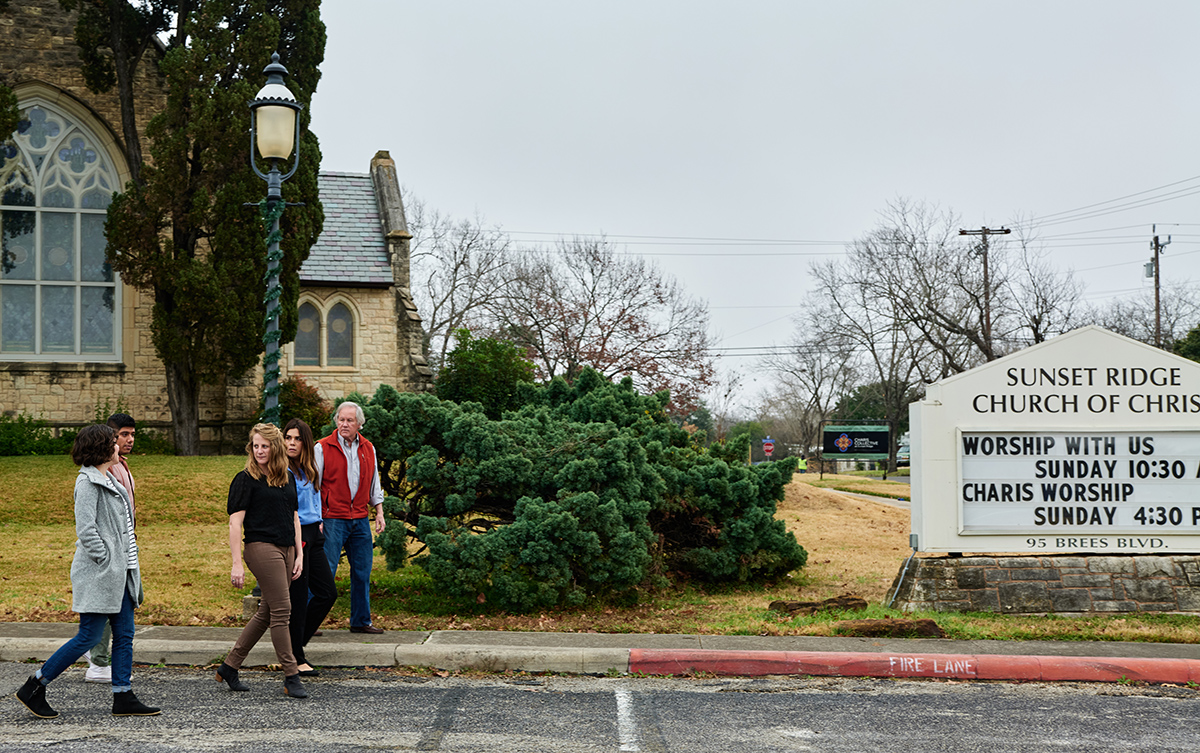
As Lowry and her team struggled with these issues, they also began to think about the untapped potential of their physical space. They could imagine all kinds of wonderful things: a park, a co-working space, a renovated wedding chapel. But they needed help to realize this vision.
Lowry found a partner in The Impact Guild, a mission-minded team that calls itself “a design lab for good.” Founder Sarah Woolsey and community development director Aaron Villarreal had spent years building their own social enterprise, a co-working space.
Now they were ready to help others — starting with Sunset Ridge — transform underused assets, engage with their neighbors and re-energize the church community.
“How do we bring people along on this journey and really help them see what it means to love your neighbor and your city and your geographic neighborhood?” Villarreal said. “We’re inviting people to that conversation.”
A new investment in the neighborhood
In 2015, Woolsey was employed at a design agency in San Antonio. She also was a member of The Park Community Church, with a strong interest in community building, and she felt called to integrate these parts of her life.
Through her job, she traveled to London to take part in a training with Shannon Hopkins of RootedGood, whose work focuses on the intersection of faith, social enterprise and local communities.
“It blew open my imagination for what this intersection could be of faith and entrepreneurship — and I wouldn’t have said it then yet, but also the activation of property,” Woolsey said.
She defines “activation” of property as its adding value to the community — for instance, as a hub for connection or economic opportunity or culture through food and art.
Does your organization’s property add value to your community?
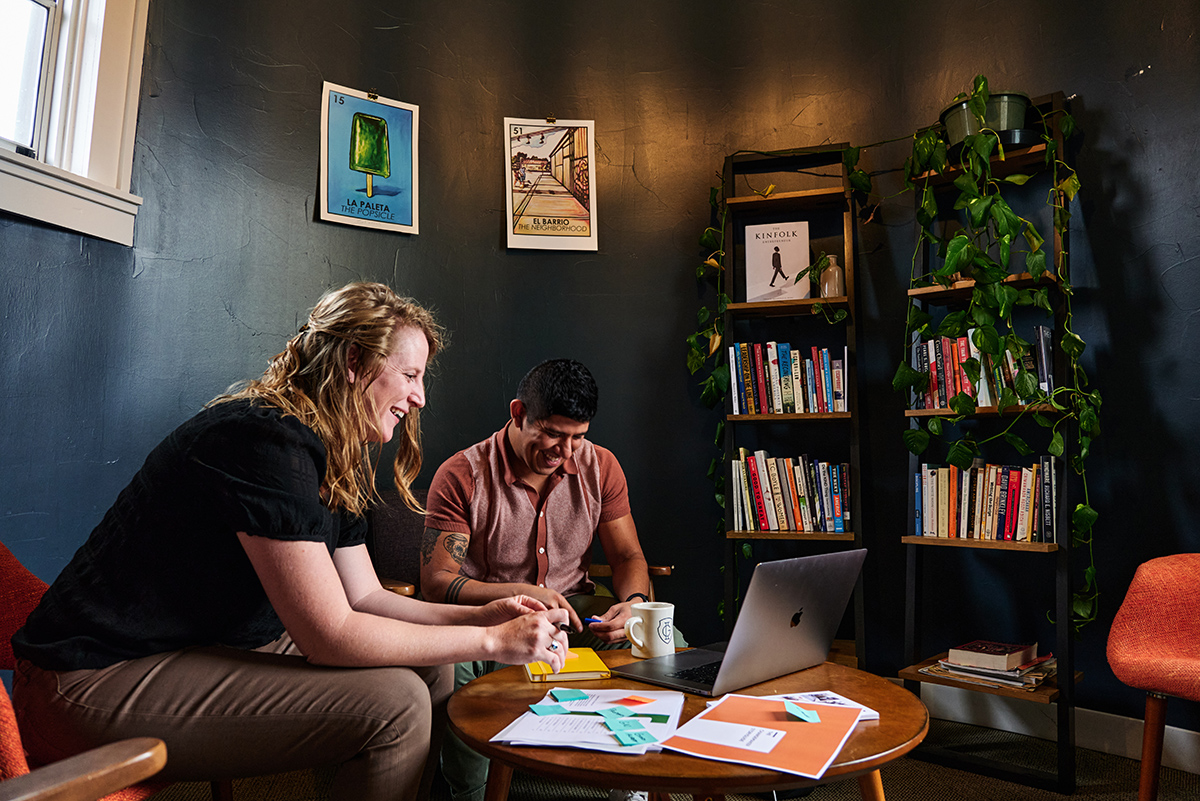
She returned to England a second time to work with Hopkins again, this time to explore launching her own social enterprise.
“I was in a beautiful manor in the English countryside in Devon, working with a community of people asking the same questions,” Woolsey said. Then, in what she calls a divine moment, an unexpected message arrived.
It was an email from the leadership of her church. They were offering her a building to bring her vision to life.
Congregants Darrell and Jodi Kirksey had purchased a commercial property in Beacon Hill, where The Park Community Church focused its efforts. The Kirkseys needed the rear warehouse for their business, Allied Hand Dryer. But they didn’t need the quirky, historic 6,000-square-foot building at the front of the property and offered The Park a decadelong lease for $1 per year.
The church needed office space, and they also wanted to see the property used for the community.
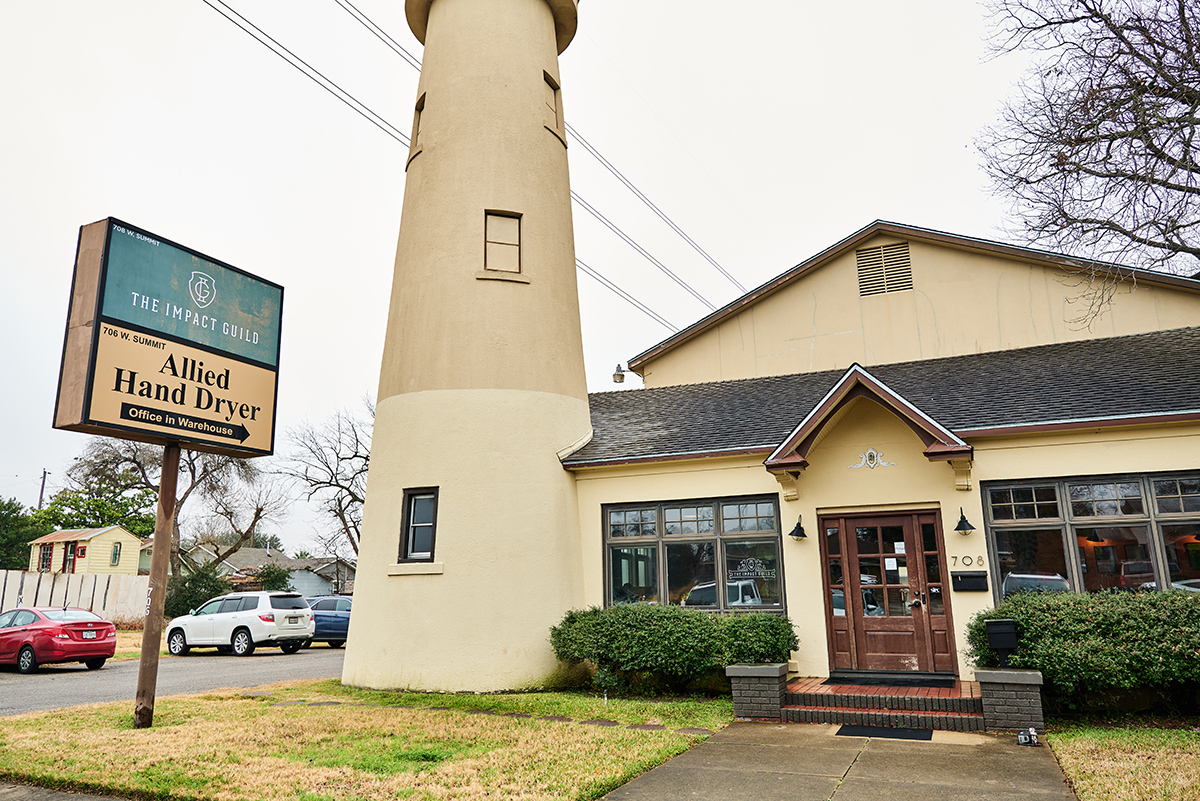
“The Park had been looking to engage the city of San Antonio in new and entrepreneurial ways, and Sarah had recently been developing her expertise in leading new social enterprises,” said Chris Nikkel, a co-founder and pastor of The Park and a founding board member of The Impact Guild.
Woolsey jumped at the chance. The commercial building was constructed in 1922 alongside railroad tracks, with a three-story lighthouse — a beacon — built into one corner. There were also other unique historic features, like a metal vault door.
But before the building could become operational, it needed a $400,000 overhaul. The Park footed the bill through existing resources and a capital campaign. Woolsey kept her day job but started working part time on the build-out. The Park saw this as an important upfront investment and paid her a stipend for the work, she said.
The space opened in 2017. The round room at the bottom of the lighthouse was furnished with cozy chairs and shelves of books, and the vault door was kept as the entrance to an intimate meeting room. Restored wood and brick give it a living-room feel.
The space was not branded as a Christian enterprise, and Nikkel describes The Park as a “silent investor,” since part of its mission is “to be a light in the city of San Antonio” and provide a space for collaboration on citywide initiatives.
In what ways is your church a “silent investor” in local initiatives?
The partnership was structured so that as The Impact Guild’s revenue grew through donations, coworking memberships and event bookings, it would help offset operating costs on a sliding scale. This model worked from 2017 to 2020, but revenue took a hit during the pandemic.
“In conversation with The Park, they were willing to go back to us contributing basically nothing for a while, and that’s what allowed us to make it through the first two years of the pandemic,” Woolsey said.
The parish model
Woolsey also found support in Villarreal, who now serves as The Impact Guild’s director of community development. Villarreal had grown up nearby. After six years in Lubbock, he moved back and saw how the Midtown San Antonio area — once predominantly Mexican neighborhoods — was in the throes of gentrification.
“Increasing development has brought house flippers, above-market-rate condos, expensive boutiques, and has displaced people who lived in this area for decades,” he said.
He was drawn to The Park, where he began attending and soon started working full time, on track to become a pastor. “This parish model of taking spiritual responsibility for a neighborhood and being invested in a neighborhood was really attractive to me,” Villarreal said.

He got to know Woolsey through the partnership. Once The Impact Guild’s building opened, he worked upstairs in the church offices, with Woolsey downstairs running the operation. When the pandemic sent church services online and The Park needed fewer pastors, Villarreal joined Woolsey’s staff full time.
The two have deep experience in the church world and speak the language, Villarreal said, but not being on a church staff enables them to operate as a more nimble, agile organization.
Hopkins, of RootedGood, said that what Woolsey and Villarreal are doing is “something for us to watch.”
“We’re going to see with frequency in the next five to 10 years billions of dollars of assets from churches that are closing or being sold,” Hopkins said. “There’s this window of opportunity for churches to re-imagine why they exist and to serve their communities in different ways.”
Shifting from doing to teaching
Over time, Woolsey and Villarreal began to see their mission more broadly. What if the building and co-working space weren’t the final goal but a pilot project for a larger effort?
To this end, they created resources and programs to share their knowledge. Good Neighbor, a field guide for community engagement, was co-written with Elizabeth Coffee, a founding member and board member of The Impact Guild.
The Toolkit offers a suite of courses and resources, and the Make Good Fellowship is a three-month accelerator for faith-based social entrepreneurs licensed from RootedGood.
The most recent addition to the offerings is Good Acres, a program to empower churches to transform underutilized property for community good.
The next step was to help a church execute a project.
Transforming a parking lot back into paradise
Meanwhile, Lowry and fellow leaders at Sunset Ridge were still grappling with how to revitalize their congregation and underused real estate assets.
“We were asking questions and wondering, What is God calling us to do with all this?” Lowry said.
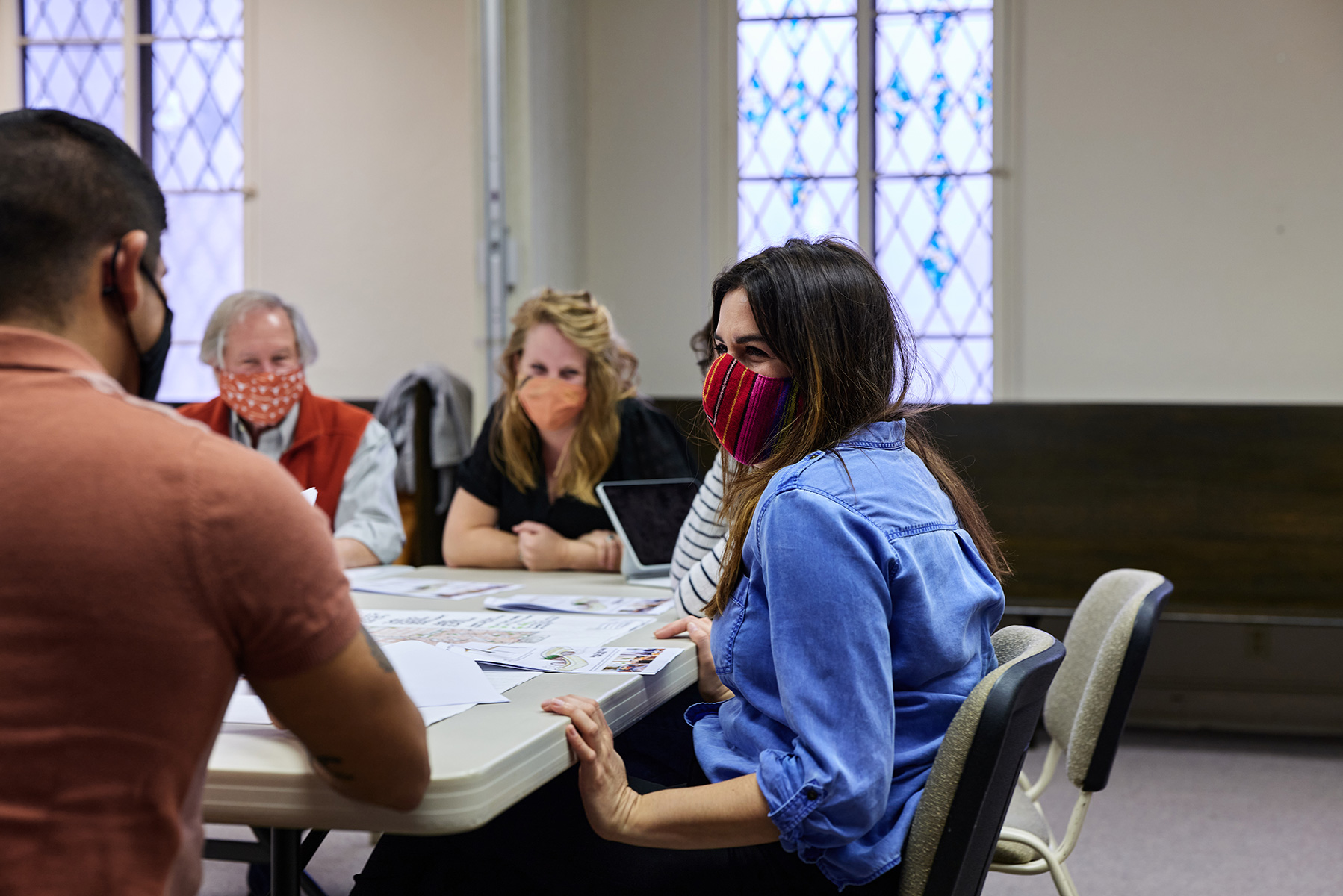
With help from 30 congregants plus consultants from Abilene Christian University, they assembled a vision team to contemplate. Lowry and her team began using Impact Guild resources, and a few months after the vision team concluded, she and two colleagues started the Make Good Fellowship.
Through working with The Impact Guild, Villarreal said, Sunset Ridge began to see the possibilities of having not just an expression of ministry but a vision of wider philanthropy for their neighborhood.
“I’ve been incredibly encouraged to see them really change their mindset,” he said. “From ‘How do we continue to survive as a church and grow membership and thus grow the tithe money?’ to ‘What is the right thing to do for our neighbors, and how do we do this in collaboration with our neighborhood?’”
The fellowship process sparked some exciting ideas. What if they created their own co-working space? What if they transformed their overflow parking lot into green space? The church got weekly requests for weddings in its historic stone chapel. What if they restored it to its former glory and used it to train underresourced women in the wedding industry?
To explore options, Lowry’s team did asset mapping, a creative exercise for seeing the resources in a local community and minimizing the likelihood of duplication of or competition with something that already exists.
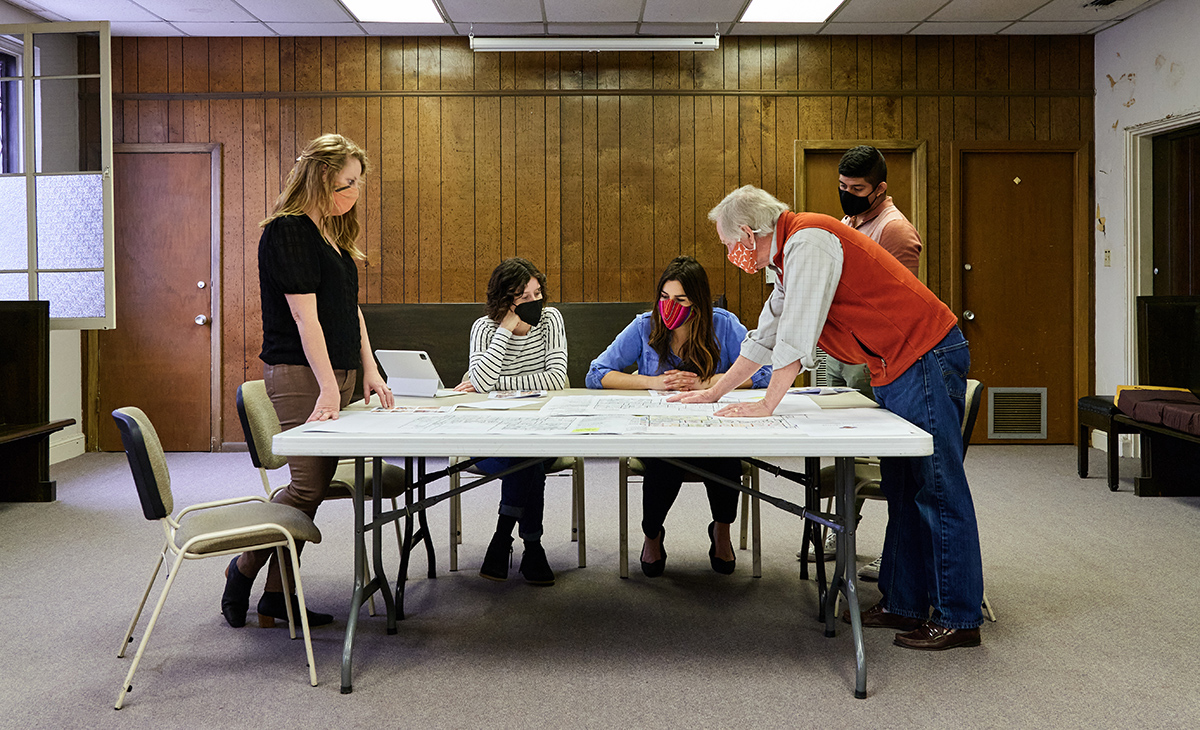
The church is in Terrell Heights, an eclectic area tucked within a very wealthy Zip code and dotted with modest midcentury ranch homes and several apartment buildings and well-supported small businesses.
When they looked at the neighborhood, Sunset Ridge members determined that there was already a playscape and community garden but no green space — something that might benefit the next-door apartment dwellers in particular.
While ideas such as the wedding chapel/training program would align the church’s resource model and financial model with their mission — an Impact Guild core teaching — they realized that it would be too time consuming and expensive to pursue right away. The other ambitious projects also would take time and energy to bring to fruition.
Eventually, they focused on creating a co-working space out of their administrative building — which would bring in revenue — and creating a lush park in the overflow lot. But that project still would be complicated, involving workshops to gain diverse input, a capital campaign and other steps.
The Impact Guild could help with that as well. Beyond developing ideas, their consulting work extends to designing and building projects, including liaising with landscape architects, engineers and technical real estate experts to bring them to fruition.
As a small nonprofit without outside funding, The Impact Guild has to charge for its work. However, they’re exploring how they could attain capital to launch projects in parts of the city that need this level of investment and might have fewer resources to contribute, Woolsey said.
Lowry now laughs at how many of her plans and timelines went out the window, while other, unexpected developments took her in the right direction.
Early in the pandemic, a church member turned a small patch of grass on the church grounds into a wildflower garden.
“It became a source of beauty and representative of the hope we all shared — that with small, faithful, daily work, we could begin to realize the dream we felt God planted in each of us: a place of flourishing for all people,” Lowry said.
Then, last summer, a neighbor who didn’t yet know about the park idea contacted Lowry about renting space for a coffee truck in the parking lot. Knowing there were no coffee shops within walking distance, Lowry said yes.
Rose Hip Coffee set up its trailer and small tables in the parking lot this fall, and it’s already become a neighborhood gathering place, with daily regulars. Lowry said she’s met more neighbors there than in the previous eight years at the church.
“In Christian leadership, we have these big pictures in our head, and we want to be the person who does this great big thing,” she said. “As we went through the fellowship, we realized that God was calling us to something very small.”
This “small” thing, she said, turned out to be doing relationship work in the neighborhood to create a community space and transform a large, unnecessary piece of asphalt back into nature.
What big issues can your church address by starting small?
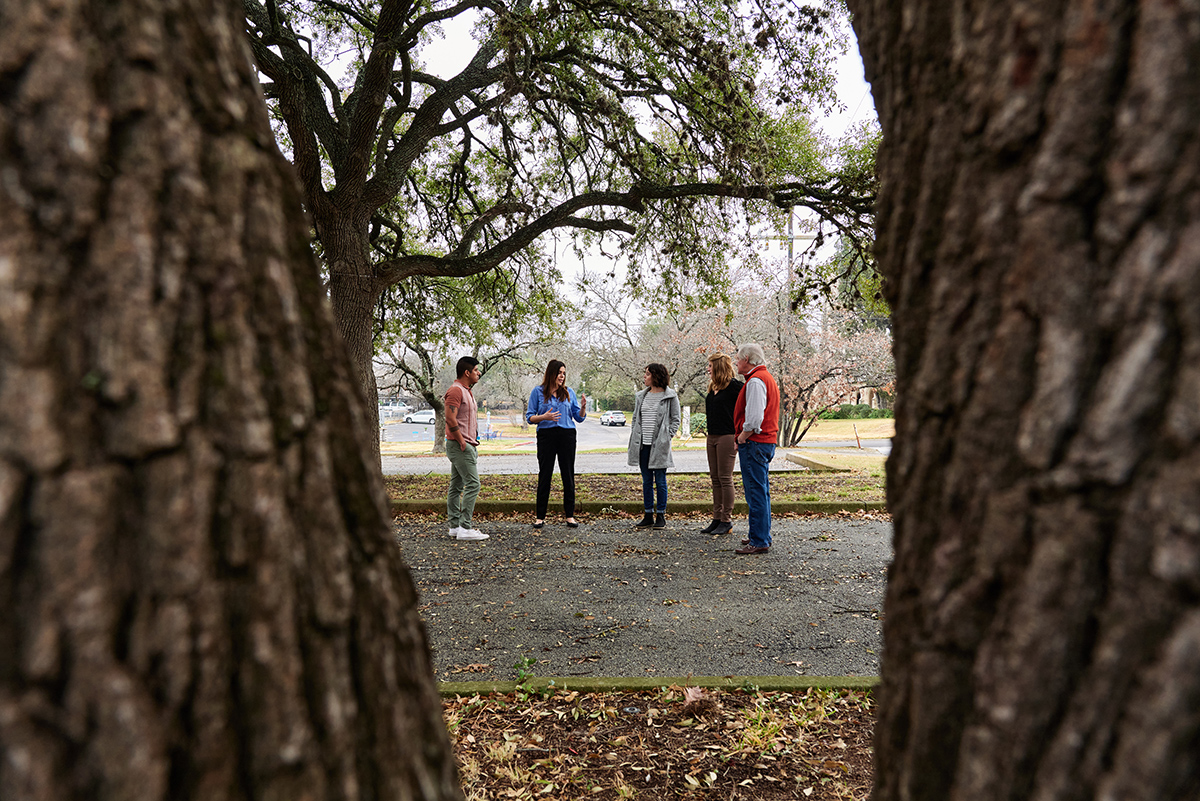
The environmental benefit of the park was compelling to Kate Jaceldo, who’s lived down the road from Sunset Ridge for 20 years. While she was always aware of the church’s presence, she had never been inside.
Jaceldo, who co-owns Compost Queens, a compost recycling program, knew Woolsey as a member of The Impact Guild co-working space. And even though she’s not a congregant, Jaceldo helped organize a letter-writing campaign to the city advocating for a code change. She then joined the committee that put together the request for proposals for the park’s landscape architects.
“By creating a gathering space and developing programming that will include the whole community, … I think more relationships will be able to develop and flourish,” Jaceldo said.
Villarreal said involving neighbors such as Jaceldo in the process is crucial.
“If the only people invited to this process is the church, then you’re just doing church by a different name,” he said. “If you want it to be long-term sustainable, there needs to be community ownership and rethinking what it means to have investors in your project.”
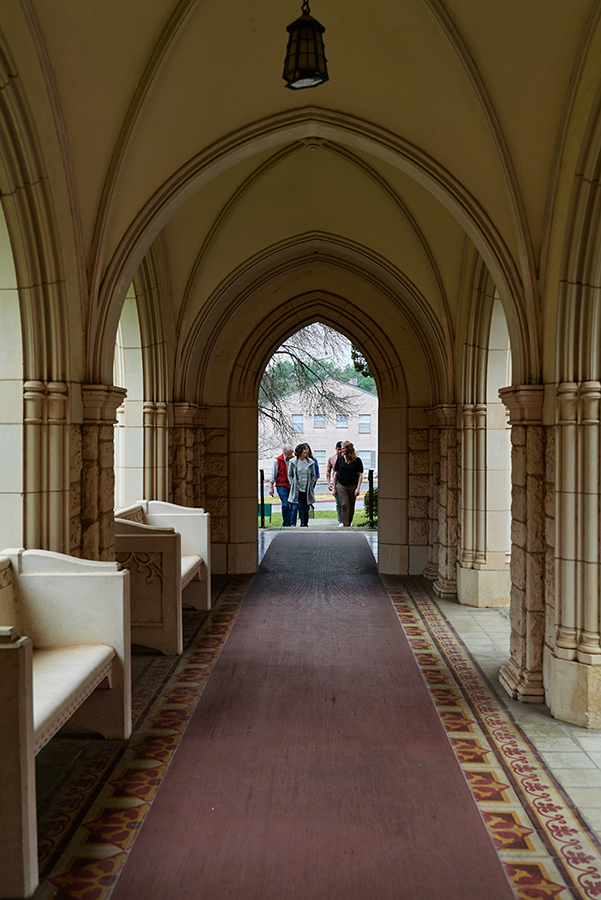
Starting small to make a big impact
A crucial principle for Christian leaders, Woolsey said, is prototyping and starting small. This gets something in motion sooner and creates an opportunity to make incremental changes with feedback. She often sees leaders set out a 10-year vision, she said, then get stalemated when they think nothing will happen until they reach that endpoint.
That’s because the process of developing and building a project is itself an opportunity for relationship building. In other words, the work starts when the project starts — not when it’s finished and wrapped with a shiny bow.
“Sarah helped us reframe and remember that all of these things are really about bringing assets and building relationships for the neighborhood, and we can start that today by getting to know the neighbors,” Lowry said.
In November, Lowry became the pastoral leader of the new missional community planted within Sunset Ridge called Charis Collective. She commends her church elders’ bravery for allowing her to forge ahead in this new role, where she leads a community of around 30 worshippers and focuses on community-based projects.
Lowry says she can’t imagine juggling these projects while maintaining her prior ministry job, and she recommends that other faith leaders be aware of the time commitment they can take. Like Woolsey, she appreciates that her church recognizes the effort it takes to do something new. As of now, the park and co-working projects are moving forward and will open in 2023, and the chapel project will get underway at a later date.
And as another small gesture to its neighbors, Sunset Ridge recently fixed the lighting on the historic chapel’s tall window.
“We now light the window every single night as another beacon of beauty and hope in the neighborhood,” Lowry said.
“Each day we get to know one more face and one more name and are grateful to get to meet God where God is already at work in our neighborhood.”
Who else in your community shares your concerns and dreams for a new way forward?
Questions to consider
- Where is God already at work in your neighborhood?
- Does your organization’s property add value to your community?
- In what ways is your church a “silent investor” in local initiatives?
- What big issues can your church address by starting small?
- Who else in your community shares your concerns and dreams for a new way forward?
For the past year, I’ve had the honor of serving Campbell, California, where I was born and raised, as a newly elected city councilmember. My hometown lies in the heart of Silicon Valley yet retains the small-town feel of the agricultural hub it once was.
Today, however, my hometown, like so many places across the country, faces a housing crisis that threatens those bonds of community. The median price of a single-family home in Campbell is $1.8 million.
It was because of this and other issues that I launched my campaign for City Council. Reflecting after a year in office, I realize that it was my faith that taught me a valuable lesson: the importance of doubt.
I’m 25 and grew up in a working-class, low-income household, the son of two immigrants from Mexico. Often, multiple family members were crammed into our little one-bedroom apartment. My dad worked several jobs — sometimes checking groceries during the day, sometimes delivering newspapers at night — to keep a roof over our heads.
My mother, who had dropped out of community college to raise me, watched over me at home. I’ve often marveled at her audacity. When I started school, for example, and was placed in remedial classes, she immediately took her arguments to the administration. I wasn’t less intelligent than the other students, she pleaded in broken English; I just needed an opportunity.
Besides education, the major force in my life was my religion. I was raised in a Roman Catholic household and eagerly attended Sunday school every weekend. I was moved by the stories of the Old and New Testaments, sensing that here was a mystery I might spend my whole life trying to understand. I seriously contemplated pursuing ministry, perhaps even seeking the priesthood. But soon we faced a crisis that made me rethink my comfortable assumptions.
My family had decided to open a Mexican restaurant, with the goal of saving money for a small college fund to help support the family’s educational dreams. Yet these plans were ravaged by the economic headwinds of the Great Recession.
As business dried up, we lost the restaurant. But that was only the beginning. My parents had by that time become homeowners, and because they had taken out a second mortgage to maintain the restaurant, they soon lost our home as well.
I still remember strangers barging in unannounced at dinnertime to tour the house — for us, a home, but for others, just another potential investment at a bargain-basement price.
I tried to come to terms with what had happened, revisiting my faith and the works of history that had always interested me in hopes of gleaning some vital truth I had missed, one that might hold the key not just to survival but to overcoming the odds. I realized I had a lot to learn.
I read and reread the story of Job, for example — a work kaleidoscopic in meaning, with truth that can be perceived only peripherally. Yet I saw at its core the idea of doubt even amid burning conviction.
Perhaps, I thought as I read, a politician is fated to share the experience of King David, another leader whose story I revisited. David could only interpret God’s will through the voice of his prophets and often grappled with the opaqueness of God’s plan — even while the earthier work of politics required bold and visionary action.
I read about Abraham Lincoln, who, in a fragment on faith not originally intended for public consumption, wrote, “In great contests each party claims to act in accordance with the will of God. Both may be, and one must be, wrong.” Lincoln led the nation through the darkest days of the Civil War while carrying this seed of doubt. Yet he forged on.
Through my reading I also realized that at the root of all that my family had experienced were issues of structural injustice. After facing housing insecurity and losing our small business, I wanted to help others in my community with the same struggles. My voice could make a difference. I decided to run for City Council.
When talking with voters on the campaign trail, I heard time and again that residents were sick of the divisions at the partisan level. Many of my most rewarding conversations were with those with whom I disagreed, because I felt I had the most to learn — and perhaps even reassess — from different points of view.
But what made the difference for me were the lessons on the importance of doubt that I had learned from Job, David and Lincoln.
This was because the campaign season was marked by a pandemic, economic uncertainty and an increase in toxicity in our political culture. When I was elected, I read it as a mandate from the community to be a “repairer of the breach” (Isaiah 58:12).
To that end, I worked with a diverse coalition including all political affiliations. I supported a statewide bill that would have allowed more duplexes, triplexes and fourplexes across California, including in Campbell. (This approach was previously anathema at the local level, but is much-needed in a state with the largest homeless population in the country.) And I worked to support small businesses with workshops and resources.
My faith taught me that there are mysteries in the world much greater than ourselves. The lesson I learned is that political leaders must live with and in fact cultivate doubt.
I ended up not in the priesthood but, in the words of Max Weber, with politics as my vocation — and as my ministry. But the call to serve, in whichever form one does so, must be tempered with a confident humility.
I ended up not in the priesthood but, in the words of Max Weber, with politics as my vocation — and as my ministry.
Having led the international team that mapped the human genome, Francis Collins said of that work: “We had now seen the language that God used to speak us into being.”
It might not be the prose that some would expect from a world-renowned scientist, but Collins, now the director of the National Institutes of Health, and at the forefront of the response to COVID-19, is as comfortable discussing Scripture as he is the “elegant equations” of quantum mechanics from his graduate studies.
Long conversant in the relationship between science and religion, he compares the laboratory to the cathedral, in that both can be considered places of worship.
“You get the chance once in a while, as a scientist, to discover something that no human knew before, but God knew it,” Collins has said. “It’s a little glimpse of God’s mind. In a way, that’s what science is doing. It’s glimpsing God’s mind and being in awe of it.”
The last 18 months have presented unique challenges, not only of a global pandemic but of widespread resistance to its realities and remedies. Among the most deeply resistant are people who cite the Bible and God’s protection for their positions. But Collins hears misunderstanding in their responses.
To him, the tools of science are a gift from God to alleviate suffering — a gift that church leaders, as trusted purveyors of accurate information, have a crucial role in sharing.
Collins received the 2020 Templeton Prize, joining the ranks of laureates such as the Dalai Lama, Desmond Tutu and Jane Goodall. The honor recognizes research, public engagement and religious leadership that advance understanding of “the insights that science brings to the deepest questions of the universe and humankind’s purpose and place within it.”
He spoke with Faith & Leadership’s Aleta Payne Aug. 19. The following is an edited transcript.
Faith & Leadership: What have the last 18 months been like for you as both a scientist and a person of faith?
Francis Collins: The last year and a half has been for me just about the most intense experience I’ve had as the NIH director, or even as a physician-scientist in previous settings. The NIH is the largest supporter of medical research in the world, with both an opportunity and a responsibility to bring every kind of idea and resource and talent together and to try to move things at unprecedented speed as this virus is spreading across the world and taking lives.
That’s meant turning the whole operation into a complete 24/7 kind of war-room mentality. In fact, I even have a regular meeting called the “war room,” where we do try to bring together all the folks who have opportunity to steer this effort and make sure we’re all steering in the same direction, ending on whatever we can learn as fast as we can.
The satisfying part of that has been to see how science has really risen to this challenge in amazing ways, probably most notably the development of safe and effective vaccines that now have saved countless lives because of the ability of those vaccines to protect people against severe illness from COVID-19.
We’ve done similar amazing things in terms of developing and testing therapeutics like monoclonal antibodies, and developing new kinds of testing for the virus that you can now buy in the drugstore and take home and test yourself. We’ve been in the middle of that in a fashion that has been exhausting but also felt like the place we were supposed to be.
For me, in terms of personal faith, this has felt very much like a calling — an exhausting one, one that has at times felt almost overwhelming, because of the gravity of what we are trying to deal with.
[It has] certainly caused me, in my reflections about science and faith, to feel linked up over the course of millennia to other circumstances where people have faced terribly difficult challenges and tried to reach out to God for insight, as I have been doing over the course of this year and a half.
I’ve been reading the Psalms a lot, because there are a lot of similarities and familiarity there in the words of David and others. Psalm 46 is posted right next to my computer: “God is my refuge and strength, an ever-present help in trouble …” — and that is where we have been. And yet we have, as people of faith, that particular rock to stand on, even if the winds are blowing hard and storms are raging.
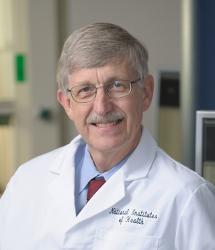
F&L: You have spoken and written about the relationship between science and faith. You do not see those as distinct. Could you talk about your faith journey and how it has aligned with your vocation?
FC: I didn’t grow up with a particularly well-formed view of spirituality. In fact, I didn’t pay much attention to it at all. My parents were not interested particularly in faith issues, and as a college student and then a graduate student studying physics and chemistry, I essentially became an atheist.
When I was in med school and found myself at the bedside of people who were facing the end of their lives and saw the ways that they tried to deal with that, I was intrigued and mystified by the level faith seemed to play in many of their approaches to the end of life.
I didn’t know what I would do in that situation. I even had a patient at one point ask me what I believed, and I realized I didn’t have a cogent answer.
I undertook a bit of a zigzagging, inefficient search of what people had said down through the centuries about faith and why somebody would actually choose to be a believer in something you cannot prove, thinking that in the process I would get a bit more comfortable with my atheism.
To my surprise, I discovered that, really, atheism was not going to fit with my sense as a scientist that you’re not supposed to apply a universal negative to something about which you can’t know everything you would have to in order to say that — for instance, that there’s no God.
Gradually, in looking at the evidence all around me from the amazing fine-tuning of the universe, which really got my attention, it seemed more and more that this makes sense — that there’s an intelligence behind all of this, and then ultimately, that intelligence seems to be reaching out looking for a connection with me.
That caused a great deal of struggle to try to understand how that would make sense. For me, it was then really digging through the world religions and encountering a person of Jesus that I couldn’t walk away from.
Reading the Sermon on the Mount and realizing the incredible power and clarity and truth of those words and recognizing that Jesus was not a myth, which is what I had assumed, but a person about whom the historical record is incredibly compelling — to the point where I felt like this was requiring a response. The response, ultimately, for me, was irresistible: to say, “I can’t prove it, but I believe it.”
I became a Christian at 27, and people did say almost immediately that this was putting me on a path toward a real intellectual crisis, because it certainly wouldn’t be possible to be both a Christian and somebody who studied science, particularly the science of DNA.
Here I am some 45 years later, and I have never really encountered what I considered to be a serious conflict. As long as you’re clear about which kind of question you’re asking and what kind of approach you would take to answer it, I find science and faith to be incredibly complementary and harmonious, and they inform each other.
As a scientist, I also have a chance as a believer, when I’m doing an experiment or admiring something that somebody has discovered we didn’t know before, to see that also as a glimpse of God’s mind.
…it seemed more and more that this makes sense — that there’s an intelligence behind all of this, and then ultimately, that intelligence seems to be reaching out looking for a connection with me.
F&L: You have referred to the tools of science as a gift from God to be able to alleviate suffering, which was just such a lovely way to say that.
FC: I have felt over the course of this year and a half, with so much suffering around us, an effort to try to find answers — and certainly, as a scientist laboring in those fields, praying that something good will come from it.
Then to see vaccines emerge that were not just pretty good; they were amazing in terms of their efficacy, 95% protection against the illness, and a very impressive safety record as well. That seemed like a wonderful scientific triumph — but also an answer to prayer.
It really troubles me, then, that believers, many of whom are still not ready to take advantage of this, sort of put forward the idea that if they accepted a vaccine, that might mean they weren’t trusting God to take care of them. From my perspective, this is how God is taking care of all of us.
This kind of answer to prayer is a gift, but we do have to unwrap it. That means if this is going to help you, you’ve got to roll up your sleeve and say thank you.
This kind of answer to prayer is a gift, but we do have to unwrap it. That means if this is going to help you, you’ve got to roll up your sleeve and say thank you.
F&L: At this point, we certainly had all hoped to be further along in recovery from the pandemic. What do you see as the continuing role for faith communities as we address the Delta variant? What is it that churches and other faith-based organizations can be doing in this moment?
FC: I think there’s an absolutely critical role for churches and other faith-based organizations right now. We do see still great reluctance in many aspects of the Christian community toward taking advantage of these gifts from God, these vaccines. Those individuals who are still open to considering it are probably more likely to listen to trusted voices like their pastors than they are listening to people in the government like me.
Every pastor who has a flock that includes people who are still not protected has the opportunity to try to become well informed about this and try to be somebody who shares the truth and who believes, as in John 8:32, that the truth will set you free.
People need to be set free from all of the misinformation and disinformation that is out there that is causing them to be concerned about whether these vaccines are going to do them harm or make them magnetic or cause them to be tracked by some chip — all of these really wild ideas that are still so widely circulated that some people believe them.
I do hope that pastors, who are in a unique position to be trusted, will not be reluctant to share the truth about what people need to do to protect themselves and their families.
Look at the story of the good Samaritan if you’re wondering would Jesus actually approve of people using medical approaches to help each other.
Well, the good Samaritan didn’t just find this person by the side of the road who was beaten and stripped; he also ministered to that person, bound up the wounds with bandages and oils, the medicine of the time. I think we’re supposed to notice that.
That was the model of how we’re supposed to help each other, as basically representatives of God, providing that healing. Certainly, the vaccines are in that same space, if you think about it, and pastors maybe have a better chance to get that point across.
But it’s more than that, because people are hurting. Every church has people who have lost loved ones, maybe in ways that are really painful — people dying in ICUs when families could not even be there because of the concern about infection. The times around the graveyards that didn’t happen — big, lonely places. Economic distress.
The church is going to be called on for months and years to deal with the crisis that this has inspired. And then there are those people who have long COVID, the strange propensity of this virus, in as many as a third of the people who get sick, to keep them sick for weeks or months in ways that we don’t understand and that happen sometimes even to people who have a mild illness, and they just don’t get better. There again, there is going to be a great need for support that churches can do, both spiritually and just providing backup for people in distress.
There could hardly be a more appropriate moment for the church to rise to the occasion and try to help all those who have been stricken in various ways by this pandemic.
F&L: There is also language in the Bible about grace and compassion, but we’re hearing about a sort of “compassion fatigue” now, particularly from some who have gotten their vaccinations, who have worn their masks, toward others who are still resisting that. To those who are perhaps feeling weary in this ongoing work, what are some words of advice?
FC: I’m sympathetic. I’m weary, too. It’s been a long slog, and it’s not over. Many of us hoped by now we’d be in a more stable situation and not looking at another terrible surge. But we are told, “Do not become weary [in] doing good” (Galatians 6:9).
I think Christians have been called upon through the centuries to be both giving and selfless and also persistent and resilient, even in the face of what seems like a never-ending struggle. We’re being called upon once again to do that.
What we have to back us up is our faith, our confidence that we’re not in this alone but are part of a healing effort that ultimately is God’s plan. But we’ve got to be God’s messengers, and if God doesn’t get tired of us — and I don’t think he does — then we shouldn’t get tired of serving this way if we have the chance to do so.
But I totally get it; people do need to occasionally take a break. Give yourself a little bit of time to rest and recuperate, but then come back at it with everything you’ve got to try to be as resilient and helpful as you can.
That means reaching out to those who are in trouble. It means, just for your own personal efforts, doing things you’re really tired of, like wearing that mask when you’re indoors with other people, because even though you’re vaccinated, you might actually be carrying that virus and spreading it to others who are still vulnerable, including people with cancer or organ transplants or kids under 12 who can’t get vaccinated right now.
So yes, we must not grow weary in doing good. We must continue. It’s easy to say those words; it’s harder sometimes to live them.
The church is going to be called on for months and years to deal with the crisis that this has inspired.
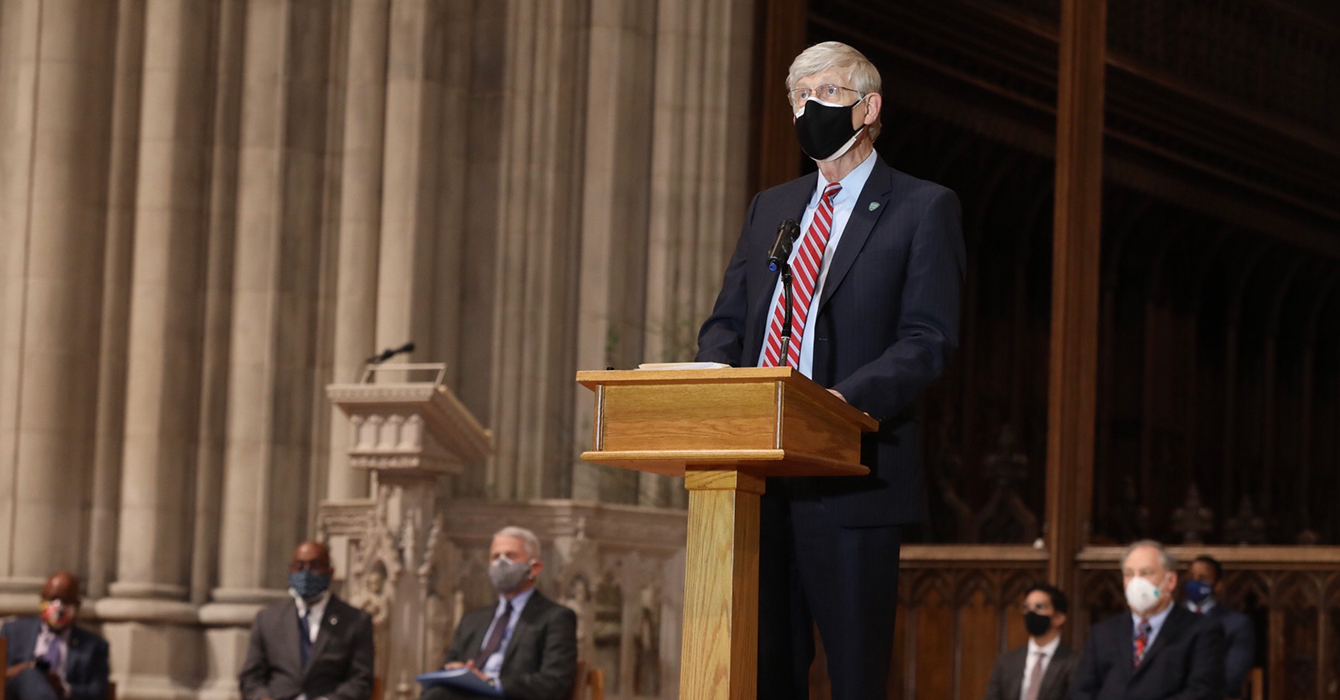
F&L: That provides me with the excellent opportunity to ask, What gives you hope?
FC: I wear a pin on my lapel, and it’s shaped like a guitar pick, because I am a musician. But what does the pin say? It says “Hope at NIH” as a reminder that while we may be the National Institutes of Health, we think of ourselves as the National Institutes of Hope, trying to bring hope to a hurting world using the best tools of science that we can possibly assemble to try to prevent and cure disease. That’s certainly what we’ve been doing right now.
Even though I am incredibly distressed and disheartened about the fact that this terrible pandemic is still so much with us, I can maintain that hope that we’re going to get through it, because I can see the ways in which, through God’s grace, we’ve made a lot of progress.
We are better off than we were a year ago. That is quite true, and we are going to figure out, with all that hard work and all that determination and a lot of bumps along the road, how to find a path forward to a place where ourselves and our children are going to have a better shot at a life that will not be so constrained by illness that we are now fearful of. That’s not idle optimism. I think that’s hope based upon the realities of what we’re trying to do and the confidence in faith as a foundation for all of it.
F&L: Is there anything else you’d like to share?
FC: I’m glad we talked about how pastors have a particularly critical role to play, and I think that’s true just of average Christians as well. If we really are about caring for each other, loving our neighbors, then that also calls upon us to do things like avoiding infecting our neighbors by wearing that mask even when you maybe are tired of it.
I would love to see those who have really done the homework and learned more about the medical facts to be ambassadors, to share what they know with those who are still confused and troubled, maybe have had their heads filled with information that’s frankly wrong. The only way we’re going to get through something like this is to face up to what that means for all of us — to really decide to depend on the truth.
In my Templeton lecture, I mentioned — and it’s become more and more clear to me in the last few months — that we have two epidemics that are happening right now in the United States of America. One of them is COVID-19. The other is an epidemic of mis- and disinformation that is contaminating our society, including people of faith, with falsehoods that are somehow propagating really readily and easily, almost more so than the truth.
As a church, we need to face up to that and become part of the solution and not part of the networks that propagate those falsehoods. We’re all called upon to do that and, I hope, as we look at the circumstance and try to make a judgment about what has gotten us into such a strange place — it’s not just about COVID-19; it’s about all the other terrible polarizations and angers and grievances that seem to be all around us — to step back from that and say, “Well, for starters, let’s see if we can agree that there has to be shared information [everyone believes].”
Otherwise, our society can’t really function. We’ve lost a lot of that, and we need to get it back. The church as a place that’s anchored on the principle of truth ought to be leading that effort, and I can’t say at the moment that that’s really happened. Maybe that’s my final exhortation. Let’s become people where the truth is what really matters, and the truth will set us free.
That’s not idle optimism. I think that’s hope based upon the realities of what we’re trying to do and the confidence in faith as a foundation for all of it.
In the pandemic, churches may find that more and more congregants are struggling with mental health issues, but Christians haven’t always been the best at talking about mental health.
In his most recent book, “Finding Jesus in the Storm: The Spiritual Lives of Christians with Mental Health Challenges,” John Swinton pushes for Christians to be more careful with their language around mental health, to push past stigma and to actually listen to people with mental health issues.
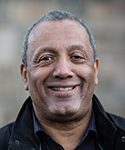 “The spiritual lives of people living with mental health issues can be constructive and positive and aren’t simply the product of pathology,” Swinton says.
“The spiritual lives of people living with mental health issues can be constructive and positive and aren’t simply the product of pathology,” Swinton says.
When we focus on diagnoses or harmful cultural stereotypes of mental health issues, then we overlook the humanity of those with mental health challenges.
Instead, if we listen to their actual experiences, then our theology might be challenged and developed even as mental health issues multiply in congregations because of the pandemic.
Swinton is the chair in divinity and religious studies at the University of Aberdeen and a registered nurse who specializes in mental health.
He spoke with Faith & Leadership’s Chris Karnadi about his book, how to improve language around mental health in church contexts, and the particular mental health struggles that have emerged in the pandemic.
 Faith & Leadership: You interviewed Christians with severe mental health challenges in the research for this book. What did you learn?
Faith & Leadership: You interviewed Christians with severe mental health challenges in the research for this book. What did you learn?
John Swinton: Almost everybody that participated in the study was Christian, and it’s a study of how Christians engage their faith in the context of severe mental health challenges.
The first thing that I noticed was the difference between the stories that people told me about their experience of schizophrenia, bipolar disorder or depression, which are the three conditions I focus on, and the psychiatric diagnosis sense of things.
There was another layer of experience, another layer of feeling, an emotional dimension. Both in terms of the general experience and particularly in terms of the specifically religious experience, there was a difference between the diagnosis and the experience that struck me straightaway.
This isn’t in any sense anti-psychiatry — quite the opposite. Psychiatry is very, very important, but it just pointed to the fact that most people don’t live in a professional context and there are other stories and other descriptions that need to be thought through beyond a diagnosis.
There was a tension between the standard way that many of us in culture assume these severe mental health issues to be and the way that people described their experiences.
The second thing is a difference between symptoms and experiences. If we talk about something like schizophrenia, for example, which is a culturally highly stigmatized condition, we think about hallucinations and voices. But the way in which we normally frame mental health experiences in terms of symptoms just doesn’t seem to me to resonate with the kinds of experiences that people have.
People go through really difficult experiences. People hear voices, and it’s horrible, and the delusions that people have are terrible, so I’m not in any sense minimizing that. However, for some people, they can live quite well with voices, and so therefore the challenge is not so much to eliminate the voices as to help people actually manage them, and then the elimination dimension comes in if people are caused great distress.
F&L: What are some of the struggles that people had specifically with the relationship between mental health and faith?
JS: Religious or Christian communities can play an ambiguous role in the lives of people with severe mental health challenges, particularly via the language and explanation that they give to people.
Almost everybody that I spoke to — and I spoke to over 80 in total — said to me that they’d had an experience where a Christian or a Christian community had told them that their situation was a result of either a sin or the demonic, and that was deeply distressful.
One of the problems is that people are lazy with their explanations, and Christians are lazy with their explanations. They say whatever is in their heads rather than listening to what people are saying. Rather than trying to get into their experience and feeling what’s going on, they go to a quick explanation.
Another thing was a deep feeling of alienation and abandonment by God that can be experienced particularly by people with enduring depression. People find the feeling really difficult in terms of their faith life, and you can understand exactly why. They feel that they’re abandoned by God and that they’re bad Christians or that they’re no longer inside the tradition as they understand it.
One of the things that struck me in the interviews for the book and then the process of theological reflection afterward is that actually the absence of God is something that runs all the way through the Old and New Testaments. God constantly disappears.
Isaiah talks about God hiding and only seeing the back of God. Jesus on the cross says, “My God, my God, why have you abandoned me?” (Matthew 27:46; Mark 15:34). The lament psalms, in Psalm 88, say, “Darkness is my only companion” (Psalm 88:18), which is a stark way to finish a conversation with God.
We are used to celebrating the presence of God, but we really don’t know what to do with the absence of God, even though it’s part of our tradition. So when somebody who is deeply depressed experiences the absence of God, you think, “Well, there must be something wrong.”
But that’s not necessarily the case. It may be that we simply no longer have the spiritual resources to deal with God’s absence, and the experience of depression brings that to the fore and helps us to think through whatever it means for absence to be part of our spirituality.
F&L: In the book, you write about why careful usage of language is so important when talking about mental health. Can you share some of the common ways that churches might talk about mental health and how to improve that language?
JS: The language that you use to describe the world determines the world that you see, and the world that you see will determine how you respond to it.
The way that language shapes our understanding of the person before us first came to my notice in my previous work on dementia. People would talk about the person no longer being there or how he or she would never do that, and so they constructed a person that was effectively dead by the way they spoke about that person.
But the person is far from dead. There are a lot of positive things to be lived even in the midst of that situation.
That’s exactly the same thing I discovered in mental health. Because mental health diagnoses, as important as they are — they’re sticky labels. Once you have one, it defines the whole of who you are.
If you have a diagnosis of schizophrenia, you become a schizophrenic, whatever that is. What on earth is a schizophrenic? It defines the whole of who you are.
If you have influenza, you don’t become the flu. But if you have schizophrenia, you become it, so the label becomes part of who you are. Then you create a form of stigma that’s really dangerous, because if you don’t see the person as a person, it doesn’t really matter to you what happens to him or her. The way in which you talk about somebody has profound social, political and spiritual effects, or side effects, in that sense.
The beginning point for good mental health care is to speak properly and honestly about people as people. The job of church communities is to be with people. And if we do think about diagnoses, it’s only to help us to know and understand this unique individual even more fully than we already do.
Minding our language, I think, is profoundly important. And once you begin to do that, once you’re self-consciously watching your language, you’ll actually begin to see that you can relate with people in general much more effectively than you would in any other circumstance.
That’s not just with mental health. That’s the way we talk about everything and every mode of perceived difference.
F&L: What are some ways to help people with mental health issues be part of a faithful community?
JS: In order to worship well, you have to feel safe, and I think people with mental health issues don’t feel safe within certain church communities.
For example, worship that constantly emphasizes happiness and joy can be profoundly difficult for people who just don’t experience that. If you have enduring depression and all your church ever talks about is happiness and how you should be happy, then you’re going to find yourself either faking your spirituality or simply feeling miserable.
Creating liturgical structures that include the full breadth of human experience is really, really important. And that includes lament.
I went to a church in Vancouver a year or two ago, and we were talking about mental health. And one of the things that this church did was have a preaching team that would give feedback on the sermon before it was preached. It struck me that if you let somebody in that group who lived with a mental health challenge, then you could really begin to think about constructing preaching that is aware of mental health issues.
That kind of innovative way of thinking and raising your consciousness so that you’re intentionally thinking about these issues is a beginning point for constructive and creative change, I think.
F&L: How can pastors be cognizant of mental health issues right now? Are there specific strategies that they should be using?
JS: A big problem for people right now is loneliness and anxiety, and I think one of the things that good pastors should be able to do is to recognize those within their community who are vulnerable to loneliness and anxiety and have strategies to mobilize the community to care for those people.
In a good pastoral situation, a pastor should know which people are particularly vulnerable at this moment in time. The pandemic means that a lot of us spend a lot of time just on Zoom like this, and there’s nowhere to get rid of your anxiety.
One thing that strikes me about these modes of communication is that on one level, it’s good, because I can speak to you on the other side of the world. But as soon as I switch this computer off, I’m on my own here, and that’s really difficult.
I think pastors need to think about that question. What happens when the computer screen goes off? How do you keep in contact with people when they are just suddenly plunged into silence in the way that we all have experienced, in that sense, which is deeply anxiety provoking?
It’s about creativity and imagination and recognizing what people are going through. I suspect that ministers and pastors will know that, because they’re going through it themselves.
This year will be remembered as unforgiving. The murders of Breonna Taylor, George Floyd and Daniel Prude, along with another 161 Black men and women in the first eight months of 2020, have taken a toll on the nation’s Black community.
In debilitating congruence, 1 in every 1,000 Black people in America has died from COVID-19 since this coronavirus began to spread here. The dual pandemics of racism and the virus have been devastating for African Americans.
The Black community is often looked to as the moral exemplar, the beating heart of justice in our society. Black Lives Matter marches, impassioned pleas against police violence and prayers for justice this year are part of a long history of struggle in America, from slavery to reconstruction and the civil rights movement. Yet we African Americans are often asked to resolve and forgive the acts of racism that have been perpetrated against us.
What if enough is enough? What if this is not a time for African Americans to extend forgiveness but a time for us to receive the respect and apologies we and our ancestors who have suffered because of racism are due? Simply put, what is the role of forgiveness in public life with respect to racism?
While some are already looking ahead to the aftermath of the upcoming election in hopes of tamping down dissent, a forgive-and-forget mindset in our current public life is not the correct response. Instead, we must look at the causes of racial animus toward African Americans and at those who support officials who perpetrate hatred and division.
The last four years prove irrefutably that America is still bound by racism and violence. The current election cycle, with all the lies and the denigration of candidates and lawmakers, coupled with the engagement of white supremacist groups identified as domestic terrorists, demands sober vigilance.
Expectations of genteel, conciliatory conversations in the wake of nationwide upheaval ignore violent rhetoric from elected officials and cannot resolve racism in America. Performative apologies that hold no weight, save for assuaging white guilt, are equally valueless and, indeed, can be harmful.
Truth be told, African Americans are asked to participate in these acts of forgiveness in order to absolve people from confronting racist actions. At the same time, we are asked to be both healers and advocates for change in the face of racism that happens to us individually and to the community corporately.
The racial reconciliation projects of denominations like the Southern Baptists or the Pentecostals have relied on the goodwill of African American Christians to give weight to the events. Yet despite these public displays of forgiveness, it has been difficult to find denominations today saying, “Black lives matter.” Many cannot or will not speak out against the structural inequities of policing that allowed Breonna Taylor to be shot to death in her own home or George Floyd to be suffocated under the weight of authority.
It is not enough to treat acts of forgiveness as an individualistic endeavor anymore. Some individual extensions of forgiveness have done more harm than good. Consider the granting of forgiveness by Brandt Jean. His brother, Botham Jean, was shot in his home by then-police officer Amber Guyger after she mistook his apartment for her own.
To many, Brandt Jean’s spontaneous act of forgiveness toward Guyger at her sentencing hearing in Dallas was a symbol of Christian virtue and racial reconciliation in the face of a grave injustice. Brandt has since been lauded and upheld as an exemplar.
Admitting that at first he hated Guyger, he told CNN that his act of forgiveness has helped him let go of his anger and see the possibility of forgiving others in his life. The whole experience, in his words, “just forced me to improve my humility and freed me from anxiety.”
For many watching, myself included, Brandt Jean’s moment of forgiveness was painful and unsatisfying. Not because forgiveness was extended, but because it fell to Botham Jean’s brother to extend forgiveness to the perpetrator with no reciprocal action.
Guyger did not ask for forgiveness. She asked for mercy — and she got forgiveness and a Bible from the judge. Months later, her lawyers have filed an appeal, stating that “her mistaken belief negated the culpability for murder because although she intentionally and knowingly caused Jean’s death, she had the right to act in deadly force in self-defense.”
Jean’s family believes that they were played for sympathy, in order for the defense to file an appeal.
This whole story is depressing, but it proves a key point. In the case of these racial transgressions, the survivors, not the agents of their despair and grief, are the ones who are asked to bear the load of forgiveness. In this case, Jean’s brother’s act of forgiveness allowed Guyger to avoid dealing publicly with the racism in the shooting of Botham Jean — simply because he was a Black man in what she thought was her apartment.
No admission of guilt, no acknowledgment of the racism. Forgiveness offered with no remorse or changed heart in return.
For many, forgiveness is a ritual from the imperative of Scripture, extended to the perpetrators by those who have been wronged. This rite, meant to be a comfort to those who have been harmed, is then seen as a metaphor for a corporate forgiveness that absolves the structural issues surrounding the act being forgiven.
But consider one of the most famous scriptures about forgiveness from the New Testament, Matthew 18:21-35, in which the parable of the unmerciful servant is used as a metaphor for forgiveness. Often, we focus on the admonition of Jesus to forgive 70 times seven, but we don’t pay attention to the portion of the passage where the man who is forgiven goes on to be unforgiving to someone who owes him a debt and has that person thrown in jail.
When the work of forgiveness flows in only one direction, it is powerless to change the behaviors being forgiven. In today’s racially charged environment, the behaviors continue, no matter how much forgiveness is extended.
The awful story of Botham Jean’s shooting intersects with both the personal and the structural aspects of forgiveness that we must reckon with in America. While it is easy to make the personal stories of forgiveness by Brandt Jean or the surviving family members of the Mother Emanuel shooting in Charleston exemplars of Christian virtuousness, they do not deal with the structural issues surrounding that forgiveness.
Extending forgiveness isn’t simply about comforting or healing those who have been wronged. There are emotional and psychological effects for all of us, especially when there is no hope of restitution or resolution.
How do we process what forgiveness means on a structural level when so many times we are asked to think about forgiveness as an individual, Christian practice? Are these individual extensions of forgiveness doing more harm than good?
I ask these questions because in our American context, extending forgiveness for racially motivated killings, be they murders or accidents, is not situated simply in individual actions but in a history that is filled with prejudices and persecution.
Unlike South Africa, with its Truth and Reconciliation Commission, the United States has launched no comprehensive movement to deal with the history of slavery, lynching, civil rights violations, and economic and educational inequities stemming from racism. As a result, acts of forgiveness for racial injustice, no matter how sincere, stir feelings of anxiety and angst for African Americans.
These public displays of forgiveness allow us to be caught up in media moments that grant absolution for everyone without reckoning with the grievous sins and behaviors that forced the wronged individuals to offer forgiveness in order to heal. Because he forgave the murder of his brother, Brandt Jean was lauded with awards and accolades for his unselfish act.
The rest of us were left, once again, to sift through our feelings of dismay and disgust for another senseless death. Often, Black families don’t even get apologies. In the case of the murder of Breonna Taylor, they simply got a check.
Like slavery, the death of a Black person in America is not an act for which a perpetrator feels compelled even to ask for forgiveness. Payment may be given as restitution. But it does not resolve the structural issue of racism.
If Christians are to be part of the solution regarding racism and injustice in America, Black Christians have to stop dealing in displays of “forgiving and forgetting” that have come to be expected. The expectation that Black people are obligated to absolve white Americans for their racism should cease.
Forgiveness is a two-way street. It is not simply about helping those who have been wronged feel better; it should not be extended unless the perpetrators are willing to confront their own racism, ask for forgiveness and provide for restitution and reform. The futile extension of forgiveness must cease.
When families from the Charleston shooting immediately forgave Dylann Roof, I shuddered. I knew that Roof would never ask forgiveness for the act of murder he considered righteous. Why give it to someone so deeply entrenched in racism? Why give in so soon and so easily?
Likewise, in this crucial time of electoral divisiveness, should candidates be given a pass and forgiveness for racial animus? No. Leadership requires work, and respect must be earned. When political and social leaders engage in racism and sexism, that should be called out by all of us. Unfortunately, there are not enough people now with the moral courage to do so.
The psychological effect of these one-way acts of forgiveness is to downplay the anxiety and heartache that pervades our racial atmosphere in America. Black death replays over and over again on our screens, like a broken record of despair. We all know the tune, note by note, verse by verse. Nothing changes.
Meanwhile, white people can knit their brows, perhaps march and put up a Black Lives Matter sign if they are really progressive. But we all know that the rest of you will look away and tend to your own gardens.
In a nation riven by racial divisions, it is time for white people to stop expecting tacit forgiveness from Black people. We are weary. Displays of forgiveness do not lead to forgetting but to remembering all the wrongs, all the murders, all the pain, all the suffering we and our ancestors have experienced in America.
It is time for all of us to wrestle with true forgiveness in work that flows both ways, work that requires a turning away from the sin of racism. Until we do, we will continue to engage in empty pantomimes.
Words from Paul’s first letter to the Corinthians have been on my mind lately. Most days and evenings, my husband and I, along with our two working-from-home sons, move from Zoom to Zoom.
“For now we see in a mirror, dimly, but then we will see face to face. Now I know only in part; then I will know fully, even as I have been fully known” (I Corinthians 13:12).
The truth is, I lean into the screen and see only dimly. Yes, I love seeing dear faces, but I long for the days when we will meet in person as colleagues, church, family and friends. Then we will all be more fully known.
Meanwhile, I am resigning myself to Zooming for the long haul.
If we must Zoom, how do we do it well and graciously? As someone who loves to think about in-person hospitality, I’ve been fielding a lot of questions lately about what good online hospitality looks like.
While I’m still in beginner’s mind, I’ve noticed that good online hospitality is not magic. Nor is there one single formula for success. And while doing our technical best for any online gathering is an important sign of respect for our audiences — an important part of hospitality — technology is not the heart of hospitality. You don’t need a computer science degree or fancy equipment to provide it well.
Instead, online hospitality is the dedicated effort to create the same ethos as in-person hospitality — but in a new land. For Christian hospitality to work — in person or online — it needs to be grounded in setting a place for God, paying attention, honoring participants and expecting transformation.
First, warmly welcoming participants to a Zoom gathering reflects that the love of God is present. Three tiny ants crawled out of the crevices of my son’s laptop the other day. Where ants can go, my guess is the Holy Spirit can go as well! God is with us, even in virtual settings.
Though not the same as the gathered-in-the-same-room body of Christ, the gathered-over-Zoom body can still experience an embodied welcome through the host’s facial expressions, laughter and gestures. You don’t want participants to mistake your expressionless face for a frozen screen.
As a virtual host, be clear about what will occur in the meeting, how participants can access what they need, and who will help them with technical glitches. This information, set out at the start, helps participants feel safe and cared for, and less anxious about their technical skills.
Consider offering social time 15 minutes before your meeting starts. The energy and warmth generated by this experience of informal chatter and fellowship will set the mood for the meeting that follows.
I watched a worship service last week where different segments were set in the homes of various pastors on the church’s staff. Each had carefully set the stage behind him or her — a vase of flowers next to a cross, a special cloth laid carefully on a small table, a set of candles beside a bowl of water. These details conveyed hospitality; they expressed a personal welcome that said, “You are in my home, and this too is sacred space!”
Second, good hospitality is about paying attention. How are others experiencing the format? One participant in a church formation group stopped coming because she saw only couples in each Zoom box and it reminded her painfully that she was the only “singles” face in a box. She had to see her singleness the entire time. How might you change her experience?
Pay attention to power dynamics and ways to flatten that curve. For those whom society has often silenced, how might it feel to know that the host can mute you? The chat function helps mitigate this by giving everyone an always-open avenue of expression. The host can also invite everyone to speak and make sure that no one voice is dominating. Even if you’re good at this in person, facilitating over Zoom takes practice.
Likewise, after you’ve placed participants in a breakout room, don’t automatically cut them off after the designated time. Instead, as host, visit each room and remind participants of the time limits or send a group message. This is more hospitable and more like what a host would do if participants were in a room together physically.
Pay attention to the ways in which tangible elements can unify us and bridge the gap of physical absence. One of my colleagues sent a piece of cloth in the mail to each participant so that everyone’s laptop would be resting on the same fabric. Similarly, you might have everyone light a candle for worship or as a symbol of a unified space. Each person could share a personal object and describe why it is meaningful. Even a bark from a neighborly dog in the background can root us to reality and be grounding and humanizing in a virtual world.
Third, good online hospitality honors participants. For longer Zoom events, consider sending a gift box ahead of time, with nice paper for note taking, a coffee mug, a bag of trail mix or some other small gift. The boxes need not be expensive; rather, they are a signal that you honor the participants and recognize that life and gatherings are more difficult for everyone these days. A pastor friend of mine drives through her town and places bags of pre-Zoom activities on the front porches of her congregation’s youth.
A sense of timing is also important for honoring bodies in virtual gatherings. We can’t simply roll over onto Zoom what we would normally do in a room. Zooming all day is exhausting. Zooming for half the day is exhausting. Keep whatever you do as short as possible and add stretch breaks, polls, screen-sharing times, music, play breaks, small groups or silence. Teach people to do the wave!
Set up trust with your audience. Those with social anxieties have a double burden to bear in these times. Honor all participants though your kindness and patience, especially those who may need to step away from being looked at for the entire meeting. Be kind as internet connections go out, cats jump onto shoulders, and children decide they need mom or dad NOW.
Finally, good online hospitality affirms that whenever and wherever God is welcomed in, God provides transformation. God’s work is still being accomplished even with so many of us confined at home.
For example, I’ve discovered that online meetings in a quarantine provide the blessing of multiplied hospitality — the hospitality of the host and that of all the households into which we are welcomed. As host, you may receive joy and blessing through all the other hosts who welcome you into their homes for the hour. Let them describe the history of the quilt on the chair, that plaque on the wall or the garden shed into which they are scrunched, seeking quiet space!
Online meetings are here to stay. Post-pandemic, we’ll continue to have options to work at home, because it’s cost-effective. We’ll continue to have online church committee meetings, because attendance is up. We’ll continue to meet as friends on Zoom, because some are unable to drive, travel or be away from home. So we might as well get it right.
Meeting virtually can be more than “see[ing] in a mirror, dimly,” if we offer good online hospitality and understand it as sacred space.
“It seems to me that one ought to rejoice in the fact of death — ought to decide, indeed, to earn one’s death by confronting with passion the conundrum of life. One is responsible to life: It is the small beacon in that terrifying darkness from which we come and to which we shall return.”
— James Baldwin, “The Fire Next Time”
Jacqulyn Jones lived a good life, strengthened by family, a supportive church and loyal friends. One of them said her smile was “like the start of spring.” So those who knew Jones were shocked by her death in the winter of 2016 at age 66.
“I saw this vibrant woman get very sick,” said the Rev. Sabrina Gray, of Bethel African Methodist Episcopal Church in Boston’s Jamaica Plain neighborhood. “She found out she had stage 4 lung cancer in September, and she died that following January.”
Gray said Jones’ first reaction was to fight the disease. But Jones soon discovered she could not outrun the cancer that was rapidly spreading through her body.
Who in your organization is asking for an opportunity to lead in ministry? What is needed to get it started?
So Jones laid out clearly written instructions to family, friends and fellow congregants about what should happen when her life ended. She made plans down to choosing her headstone; her children discovered after her death that all they had to do was go to the funeral home and show up at the church.
That event nearly four years ago was a defining moment for Gray. She realized she had to take the lead in preparing her congregation for death.
Today, she is the director of Planning Ahead, a three-part program at Bethel AME in which participants map out their end-of-life plans. Since the program’s inception, Gray has helped some 200 people prepare for their final season of life.
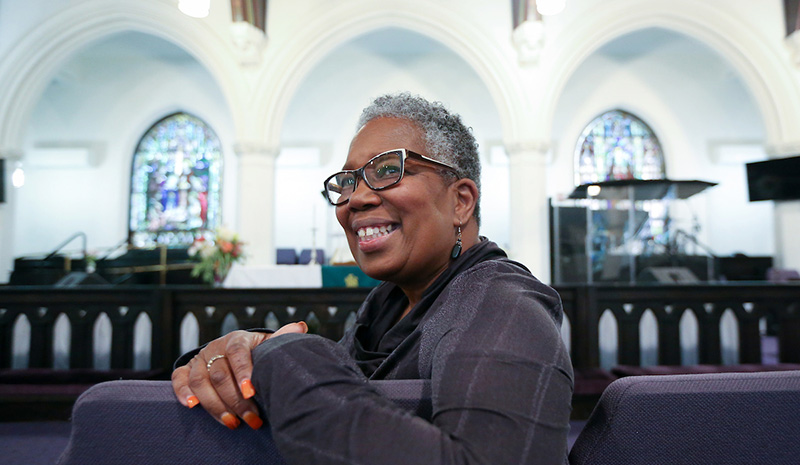
“Certainly, we as an African American church, we believe that there is an afterlife,” she said. “I think that for us, as far as ministry, as far as reaching out, as far as witnessing, as far as sharing, this program allows us to go through that door and to speak to others about our faith, about that day that will come, without fear.”
Death and faith
The idea for a new pastoral ministry on death and dying came from Bethel AME’s co-pastor, the Rev. Dr. Gloria White-Hammond.
“We certainly recognized that at some point in life, we will transition,” White-Hammond said, “and we wanted to create a space for people to anticipate how to plan for that. Jesus was a planner. He planned ahead.”
White-Hammond and her husband and co-pastor, the Rev. Dr. Ray A. Hammond, are rare among ministers in America. Both are medical doctors, and not surprisingly, Bethel’s pews are occupied by nurses, radiologists, psychiatrists, pediatricians and a range of other health care workers.
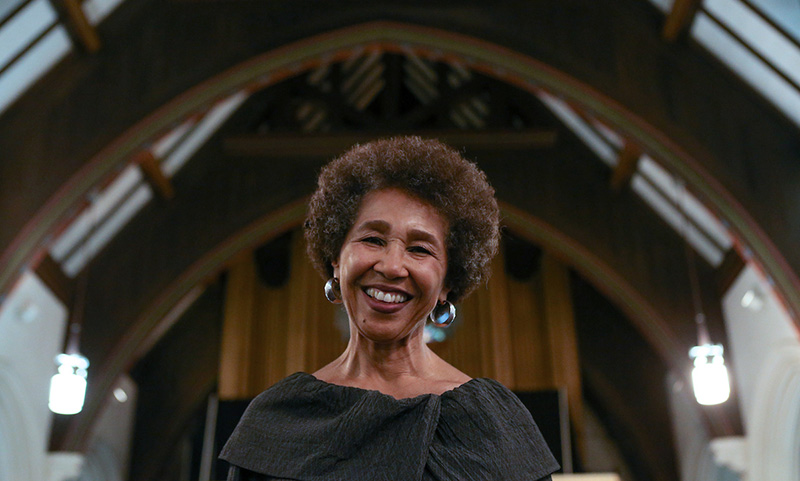
“It is higher than the average number,” White-Hammond said. “Obviously, you have two physicians who are your pastors. So we have medical students. We have people in various levels of training who look at us and have a sense that this is a place where people speak their language.”
Many of Bethel’s ministries emphasize health and wellness in various forms — counseling programs and spiritual support for single black women; initiatives for fortifying marriages, confronting sexual violence, advocating for criminal reform, assisting inmates and addressing problems of troubled youth.
But until four years ago, there was no single program to address many people’s greatest fear: death. How do you prepare for what writer James Baldwin described as that “terrifying darkness”?
Don’t talk about death
Getting members of the congregation to talk about dying was quite an undertaking, Gray discovered when she was given the task of addressing the issue.
“It’s a cultural thing,” Gray said. “When I grew up, I was told, ‘Don’t talk about death; it’s going to make it happen.’ So we didn’t talk about it, and when somebody died, it was one of those taboo things. You don’t talk about death.”
Who has taught you about death and dying? How have they taught you to prepare?
But Jacqulyn Jones’ passing brought the unavoidable reality of life’s conclusion into sharp relief for Gray. Jones’ diagnosis coincided with the beginnings of a conversation with congregants on death and dying that also reflected the church’s commitment to community and social justice.
The seed for the Planning Ahead initiative was planted in 2015, when Hammond and White-Hammond invited the Rev. Rosemary Lloyd to speak to Bethel members. Lloyd is the advisor to faith communities for The Conversation Project, an initiative of the Institute for Healthcare Improvement. The organization’s aim is to help people talk about what they want at the end of their lives.
The Conversation Project offers resources for individuals and organizations to facilitate end-of-life conversations. According to their national survey, 92% of Americans say such conversations are important, but only 32% have actually had one.

White-Hammond’s experiences with patients in 30 years of practicing medicine, including some of her own parishioners, inspired her to initiate the program at Bethel. She had witnessed patients take their last breaths absent a written will, she said, and had seen the family disputes that ensued.
She had seen people die leaving many kinds of unfinished business — from practical things like not sharing passwords for smartphones and computers to deeper things like not offering apologies or forgiveness to family and friends.
What aspects of planning ahead do you resist? How could your congregation ease the burden of getting started?
Prior to Lloyd’s address in fall 2015, Bethel’s ministers were concerned that few people would come for a presentation that zeroed in on one of their greatest fears. No more than a dozen folks were expected, but more than three times that number showed up.
White-Hammond embraced the conversation begun by Lloyd and took the lesson a step further, beginning by giving the program a name that she hoped would not alarm Bethel congregants.
“We cast [end-of-life care] in a positive light. You’re taking a big trip, you plan ahead. You have a momentous occasion in life, you plan ahead. And so it made sense to think about this also as ‘planning ahead,’” she said.
The ‘death lady’
But showing up to hear a lecture on death was one thing; discussing the steps that should precede one’s own passing was another, said Gray, the Planning Ahead director.
“I found church people started avoiding me because, they said, ‘There’s the death lady. She’s the one who talks about death.’ So, you know, we really had to get people comfortable,” she said. “We really had to get people to come to grips with the reality that one day they are going to die.”
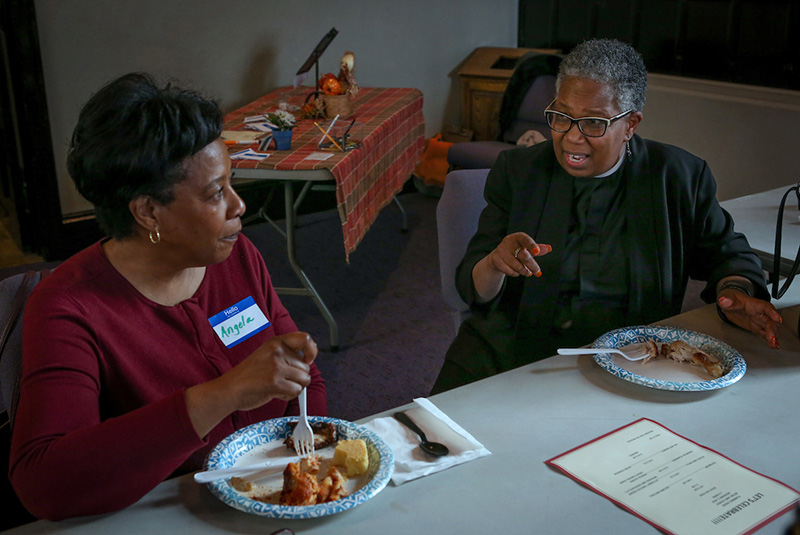
Gray and her husband, Bob, a Boston Celtics chaplain and assistant pastor at Bethel, were among the first to complete the three-part program, along with Hammond and White-Hammond and another ministerial couple.
For White-Hammond, it was deeply personal. Her family is afflicted by a degenerative neurological disease that was inherited by six of her seven siblings; four have died. She knows that death can come suddenly.
While some doctors might view death in clinical terms, White-Hammond — who says she is a minister first and foremost — sees the end of life through the prism of faith.
“I’m grateful for a faith that says there’s something else to look forward to. And to be able to see some of my people, and my people’s people, is very powerful for me,” she said.
She constructed the Planning Ahead ministry as a pragmatic tool in a spiritual setting for individuals like Shaya Gregory Poku, a member of the Planning Ahead class of 2018.
When Poku was a child, she knew several people who died young, including cousins who perished in a plane crash.
“I have known my whole life that there’s a very fine line between life and death, and something can happen instantaneously, even when you’re young,” she said.
Planning ahead in three stages
Planning Ahead programs, which generally involve five to 10 people, take place in winter and spring and are divided into three sessions, once a month for three months. The program is free for participants, with the church providing funds for Gray’s modest salary.
The first step, Gray said, is simply to have a conversation about death and dying.
The second step is to write down five wishes to guide those providing your future end-of-life care, including options for palliative care.
“For example, if you’re in a coma and likely not to wake up, what would you like to happen? Would you like to be cremated or buried? How do you want people to treat you? How do you want to be remembered?” Gray said.
The five wishes advance directive format encourages people to consider medical, personal, emotional and spiritual issues, including identifying a health care proxy in case they aren’t able to make decisions for themselves.
And the third step?
“All we do is celebrate, because people have gotten the process started,” Gray said. “We give them a little trophy, a little certificate, and then we have a potluck dinner, and it’s just a time for us to reaffirm one another.”
How do you invite people to have conversations about difficult topics? How do you celebrate making progress in these conversations?
Planning Ahead is best done when the end of life is still theoretical, White-Hammond said. Most of the program’s current participants are in their 30s or just entering middle age. Some are teenagers who have lost friends and loved ones to drugs, homicide or much-too-early natural death.
Despite the care she takes to be aware of people’s feelings, Gray said that not everyone completes the program.
“Some people come and go, and I see them sort of withdraw, or they get very quiet,” she said. “And sometimes I reach out to them afterwards, and they say, ‘This is too much.’”
Poku, who oversees the Center for Social Justice and Community Impact at Wheaton College in Massachusetts, said she has always been a planner but until recently had not planned for the inevitable.
“I’ve gotten more comfortable talking about death. I’ve been able to get my father to finally write down some of his thoughts about what he would actually want to happen,” she said. “It’s still a work in progress, but it’s on paper, and he actually talked about it with us for the first time.”
Another participant, Gloria Weekes, said the manner in which her mother passed away motivated her to be more prepared. Weekes, a forensic clinician in the juvenile court system, said her mother planned for everything imaginable — except her death. She said that her mother “never planned for what our lives would look like after she was to leave this earth and expire.”
After her mother died of breast cancer, “it really left a lot of close family members really hurt that they didn’t have a chance to say goodbye and transition,” Weekes said.
Bethel spreads the faith
In a promotional video on the Bethel website, a Planning Ahead participant, the Rev. Carrington Moore, stares straight into the camera and says, “Often, we think about dying in the sense that we are going to die alone, when in fact we actually die in a community.”
What resources for end-of-life planning are available in your community? How might your congregation benefit from these resources?
Bethel AME is working to replicate the Planning Ahead curriculum in communities throughout Greater Boston, including churches, hospitals and teaching institutions.
All are part of the Massachusetts Coalition for Serious Illness Care, a network of more than 100 organizations dedicated to helping people align their health care with their values and preferences.
White-Hammond, a resident practitioner in ministry studies at Harvard Divinity School, also teaches a class with divinity and medical school students predicated on the three-step Planning Ahead program.
She said clinicians with the American Academy of Hospice and Palliative Medicine “are now looking at the importance of spirituality for their patients in the context of wanting to provide more comprehensive, especially palliative care.”
The minister said health care providers are reaching out to Bethel AME to understand how spirituality fits into health care decisions.
Breaking the silence
On a recent evening, the voices of the rehearsing choir wafted through Bethel’s halls and vestibule and into the main chapel where Gray was wrapping up an interview. After a 30-year teaching career in Massachusetts and her native Kansas, Gray considers Bethel AME her home.
She and Bob Gray were married here, and it is here where she hopes one day to say her final goodbyes, among community and friends.
The so-called “death lady” — raised to refrain from discussing the finality of life — is no longer afraid to talk about her own inevitable death.
Gray shared her five wishes with her children last Christmas. Her husband warned her that it might be the wrong time to have the discussion, but Gray gathered the family together in the living room beneath the sparkling tree.
It didn’t go well at first, Gray said: “The one daughter who I knew was going to scream and cry and run out the room did.”
But her daughter returned moments later.
“She said, ‘Mommy, it was just too much, but I have to really come to the reality that one day you’re not going to be here. … I guess I should do it too, huh?’”
Questions to consider
Questions to consider
- The Rev. Sabrina Gray felt called to lead conversations about end-of-life care in her congregation after seeing how a friend planned for death. Who in your organization is asking for an opportunity to lead in ministry? What is needed to get it started?
- Who has taught you about death and dying? How have they taught you to prepare?
- What aspects of planning ahead do you resist? How could your congregation ease the burden of getting started?
- How do you invite people to have conversations about difficult topics? How do you celebrate making progress in these conversations?
- What resources for end-of-life planning are available in your community? How might your congregation benefit from these resources?


